


3 awards for IndIan LInk FREE MARCH 2013 • melb@indianlink.com.au • www.indianlink.com.au MELBOURNE Sydney • Melbourne • Adelaide • Brisbane • Perth • Canberra PO Box 80, Chadstone Shopping Centre, Chadstone VIC 3148 • Ph: 03 9803 0200 • 1 8000 15 8 47 • Fax: 03 9803 0255 Premier’s Multicultural Media awards

2 MARCH 2013 www.indianlink.com.au
INDIAN LINK
PUBLISHER
Pawan Luthra
EDITOR
Rajni Anand Luthra
ASSISTANT EDITOR
Sheryl Dixit
MELBOURNE
Preeti Jabbal
CONTRIBUTORS
Rajni Anand Luthra, Lena Peacock,
Jhala, Preeti Jabbal, Pravasi Bhavaratiya Samman, Kudrat Singh
Subhash K. Jha
ADVERTISING MANAGER
Ashish Chawla 0468 389 272
ADVERTISING ASSISTANT
Nitika Sondhi 02 9279 2004
DESIGN
Danielle Cairis
Indian Link is a monthly newspaper published in English. No material, including advertisements designed by Indian Link, may be reproduced in part or in whole without the written consent of the editor. Opinions carried in Indian Link are those of the writers and not necessarily endorsed by Indian Link. All correspondence should be addressed to Indian Link
Level 24/44 Market St, Sydney 2000 or GPO Box 108, Sydney 2001
Ph: 02 9279-2004
Fax: 02 9279-2005
Email: info@indianlink.com.au
www.indianlink.com.au
The new hundred million
Lodge now can be counted in billions.
It seems that one billion dollars is the new one hundred million. In numbers, a 100 million is 10% of the magic billion figure, but the way the billion figure is bandied about by the current politicians in Australia, it does seem like loose change.
The centre of the world, or at least of Australia, in the first week of March has been Western Sydney. With PM Gillard camped out in the wild west, attention has been turned to what is on offer by the Labor government in Australia as the unofficial campaign for the September 2013 election kicks off. Dumbing it down to a price differential is easy, in terms of what Labor has to offer compared to what the Coalition will offer, or take away. In business, the competition seems to be in the hands of the dumbest player when all that exists is a price differential, and decisions are made on pricing rather than quality. This obviously has become the grand play in the political stakes where rather than policy, it is a loose throw of a few billion here, or a few billion there. The entry fee to stay at The
The Gillard government seems to be particularly keen to splash a few billion around. Only this week (and at the time of writing this, on Wednesday), $1.2 billion has been allocated to salary increases in the aged care sector; Western Sydney has been promised $1 billion for a new road project (subject to conditions); last week Prime Minister Gillard unveiled a $1.1 billion school reading blitz and the week before she made a pitch to blue-collar workers, unveiling details of the Government’s new $1 billion jobs package. All of this, together with promises in the past, have even the Business Council of Australia worried, due to the $49 billion black hole of unfunded new spending commitments. And this is before funding has been decided for what seem to be two of Labor’s re-election platforms, the National Disability Insurance Scheme (NDIS) and the Gonski Education reforms, which are both slated to cost about $10 billion dollars a year.
Where the danger lies in these promised expenses for the rapidly increasing Indian Australian community, is the impact this spending - which has not been balanced by income - will have over the longer term. This can mean increased taxes on the aspirational and hard-working Indian community, or
government enforced austerity measures in the future to pay off public debt.
More concerning is the Gillard government’s demonising of foreign workers. Playing to its base of the unions (and the funding received from them), the Labor Party, true to its DNA is keen to allow for greater contraction of the labour market, so as to squeeze demand and increase wages. While that can happen, what is shameful to watch is the lack of respect shown to the hard work of these workers who contribute to the economy by paying their share of tax.
457 visa holders are not supported by government-funded Medicare and also pay school fees for their children in public schools. They often take up jobs which create greater flow-on opportunities for the wider community.
It is a shame that the Gillard government has failed to recognise contributions by these workers.
The Indian Australian community, which has grown strongly in the past few years with migrants starting in the 457 visa categories before becoming full time residents, has a right to feel insulted by the Gillard government’s dog-whistling. If there are loop holes in the system, the government needs to fix them: they have the mandate to do so, but not by belittling the contribution of those who work hard in their new jobs down under.


MARCH 2013 3 INDIAN LINK
Ramandeep Kaur, Sukrit Sabhlok, Petra O’Neill, Mohan Dhall, Avi Chandiok, George Thakur, Nancy Althea, Priyanka Tater, Sheryl Dixit, Rani
PAWAN LUTHRA
EDITORIAL
cOMM u NITyS c ENE

ministers shake a leg at AISV party
A well-deserved triple celebration for recipient of the Pravasi Bharatiya Samman

It was celebration time for AISV, and nothing works better for Indians than some Bollywood dancing to convey the celebratory mood. Joining in with bonhomie and some seriously good moves were Nicholas Kotsiras, Victorian Minister for Multicultural Affairs and Citizenship; and Senator Helen Kroger, Liberal Senator for Victoria. The event was organized by the Australia India Society Of Victoria (AISV) at Metropol Receptions in Clayton to celebrate Australia Day and India’s Republic Day.
The select audience was also invited to celebrate the accomplishments of AISV, the oldest incorporated Indian organisation in Victoria.

The AISV was recently bestowed with the Pravasi Bhartiya Samman, a prestigious award presented annually to overseas Indians by the President of India. In the past 10-11 years since the inception of the Pravasi Bhartiya Samman, which is awarded during the annual celebration of overseas Indians called Pravasi Bhartiya Diwas, only two other Australians have been chosen for this honour.

The PBD award is considered to be the pinnacle of awards given by the Indian government – the highest possible for any overseas Indian individual or organization.

In 2012, former Victorian Premier Ted Baillieu also awarded the AISV with the Multicultural Award for Excellence in Community Services.
The formal part of the evening started with the rendition of National anthems of Australia
and India. Dr Gurdip Aurora, President of AISV welcomed the guests and spoke about his experience in India where he was invited to accept the award on behalf of AISV. He also spoke about AISV and its contribution in articulating the needs and aspirations of the Indian community to the Government and in providing much needed community support. This was followed by an address from
Hon Nicholas Kotsiras, Victorian Minister for Multicultural Affairs and Citizenship. He congratulated AISV and encouraged the organisation to continue taking the lead in supporting the community and in expanding their reach and services.
Among the dignitaries present were Mr Raj Kumar, Acting Consul General of India; Ms Laura Smyth, Federal Member of Parliament for LaTrobe; and Ms
Amanda Paxton, Victorian State Director for the Department of Immigration and Citizenship.
Senator Helen Kroger, Chief Opposition Whip in the Federal Senate, representing the Leader of the Opposition, Hon Tony Abbott delivered a message from Mr Abbott, the Leader of the Federal Opposition, who was unable to attend the event. Mr Raj Kumar, Acting Consul General of India also shared a few words with the audience.
Manpreet Kaur Singh, Executive Producer at SBS radio, with her inimitable eloquence and elegance, was the MC for the evening. Guests were entertained with a graceful Mohiniattam performance by OAM Mrs Tara Rajkumar’s dance group. This was followed by an exuberant performance from the NB Dance group that soon became the highlight of the evening, as the Ministers and AISV guests and members shook a leg or two and seemed to thoroughly enjoy the opportunity. The evening continued on that merry note till AISV’s Shivani Lamba wrapped up the event with a vote of thanks.
4 MARCH 2013 www.indianlink.com.au SHARMA’S INDIAN SWEETS OPEN 7 Days 11am - 10.30 P m • s h OP 4/350 TaylO rs rD, D E lah E y all PUNJ a B a ND BENG al I s WEET s WE cat E r for all occasions • hom E d E liv E ry availabl E WE cat E r to Parti E s , WE ddin G s and b U l K ord E rs” fr EE hom E d E liv E ry availabl E HOLI KE RANG GHUJIA KE SAANG NOW AT SHARMA SWEETS 25 yr E x PE r IEN c E IN s WEET s mak ING Ph: 9356 4400 m OB: 0416 839 078 a ll T y PE O f T ra DITION al INDI a N s WEET s ar E ava I la B l E h E r E A select number of corporate stores available for sale VictoriA: • Langwarrin • Mornington • Vermont • Doncaster East • Brunswick • Frankston • Wodonga • Yeppoon • Gladstone • Hervey Bay • North Lakes • Aspley • Ipswich GoLD Coast: • Helensvale • Burleigh Heads Do you HaVE aCCEss to $60k as a DEposIt*. IF so you CouLD BE part oF tHIs FLaGsHIp pIzza FraNCHIsE. tHIs oFFEr Is opEN For a LIMItED tIME For VICtorIa oNLy. QuEENsLaND: Gautam Jain 0404 077 079 DEposIttakEN DEposIttakEN DEposIttakEN
Photos: Monica Raizada, VP AISV





MARCH 2013 5 INDIAN LINK One stop shop for all your financial Needs Complete FinanCial Care Superannuation investment retirement planning personal insurance Justice of peace F I n A nc IA l Pl A nne R /D IP.FS/JP Ali YI l DIRIM AuThoRISeD ReP no. – 289800 AnD AAAFI AFSl – 312478 con TAc T no. 03 9386 4300 sUITE 8 / 240 s yDNE y rOa D cOBU r G v I c 3058 P h: (03) 9386 4300 fax: (03) 9386 4600 www.completefinancialcare.com.au con TAc T no. 03 9386 4500 0430 352 830 F I n A nce MA n AG e R/ B R oke R/D IP.FS Complete lending Care Home loans Business loans Construction loans personal loans Car loans
Indian Link’s award at Premier’s Multicultural Media Awards

Best News Report, Best Online Publication of the Year, and Best Image of the Year
BY LENA PEacocK
The Indian Link media group walked away with three accolades at the Premier’s Multicultural Media Awards held in Sydney on Thursday, 28th February.
As well as a stack of nominations, Indian Link won awards for Best News Report, Best Online Publication of the Year, and Best Image of the Year. Held for the first time, the awards ceremony acknowledged and highlighted the important role that ethnic media plays in Australian society. With over 300 guests in attendance, awards were given to the best multicultural print, online, television and radio across the state. Awards were judged by an
independent panel of academic and working media experts.

The evening was opened by NSW Premier Hon Barry O’Farrell, who underlined the importance of multicultural media in this state, as it “ensures that people regardless of language and cultural background can participate fully in public life and public debate.” Also in attendance on the evening were Minister of Citizenship and Immigration Hon Victor Dominello and the Chair of the CRC, Stepan Kerkyasharian.
A Sydney-based media group, Indian Link was nominated in a whopping 7 out of the 10 categories, including Best Print Publication, Best Editorial or Commentary of the year, Best Use of Online & Digital Media and Best Feature of the Year.
Indian Link has been in operation since 1994 and was born from Pawan Luthra and Rajni Luthra’s desire to act as more than just a voice of the Indian community in Australia, but also as a vehicle for change and a voyage of discovery. And judging from the results of this award ceremony, the media group is going from strength to strength.
With its biggest strengths - focus on quality and high standards, comprehensive editorial content and sleek presentation skillsIndian Link has come a long way. Starting off as a small black-andwhite monthly production, it has today morphed into a media house with extensive reach across many mediums. The periodical of choice within Australia’s Indian community, it is also the first point of contact for mainstream media when it has a question on an Indiarelated issue.
Pawan Luthra, CEO of Indian Link said he was proud of the ongoing recognition that the company has received, from within the community as well as from the mainstream. “In 2011 we were honoured to receive the Harmony Award in the NSW Sub-Continent Community Awards. 2012 saw us bring home three of the 7 awards at the Parliament of NSW Multicultural
Media Awards, and to claim three awards yet again this year, reveals not only our dedication but also the high standards we set ourselves. I congratulate my team for their talent and their efforts”.
Co-Editor Rajni Anand Luthra accepted the awards on behalf of the high-calibre media group. She thanked the 70-odd contributors on both the radio and newspaper arms of the company, as well as the sponsors and supporters, who have all weighed in to take Indian Link to the high status it enjoys today.
But she had a special word to the core team who work full-time and behind the scenes. “The marketing staff Vivek Trivedi, Nitika Sondhi Verma and Ashish Chawla, HR manager Antoinette Mullins, contributing editors Preeti Jabbal and Sheryl Dixit, and graphic designer Danielle Cairis, all work very hard to see that a quality product goes out every fortnight,” she said. “Their commitment to excellence is truly inspiring, and they all have equal ownership of the awards we received this month”.
This media group shows no signs of slowing down any time soon, as it continues to grow its portfolio. For Australia’s Indian community, this can only mean fresh pathways for better integration and a stronger public voice.
cOv ER STORy
award
Editor Rajni Anand Luthra accepts an
from Barry O’Farrell, Premier of NSW
B E s T N EW s R EP o RT of THE YEAR Indian Link literature of anguish B E s T Us E of oNLINE & d i G ital mE dia Indian Link B E s T oNLINE P UBLI c ATI o N of THE YEAR Indian Link B E s T P RINT P UBLI c ATI o N of THE YEAR Indian Link bE st i maGE of th E yE ar Indian Link aussie kid Gandhi B E s T fEATURE of THE YEAR Indian Link australia Day honours bE st i maGE of th E yE ar Indian Link Julia Gillard at India fair bE st Editorial/ comm E ntary of th E yE ar Indian Link community leadership indian link nominations
2013
6 MARCH 2013 www.indianlink.com.au
Cover photo by Warren Duncan/CRC of NSW Photos: Warren Duncan/CRC of NSW and Vivek Trivedi
award winning night



1. BEsT NEWs rEPOrT
Of ThE yEar
Literature of Anguish by Usha Ramanujam Arvind (Sept-2, 2012)
Usha Ramanujam Arvind, one of Indian Link’s most experienced team members, wrote the piece Literature of Anguish. This report concerns itself with a writers’ conference held at the University of Western Sydney that brought together leading literary figures from India and Australia, over a three-day period.
Usha’s particular report was a part of the paper’s ambitious coverage of the entire event, which was based on the literature of Australia’s Aboriginal community and India’s Dalit community. The writing eloquently explores the many shared similarities between these two seemingly different groups of people, who after generations of oppression, are now finding a voice through literature.

The intelligent and soft-spoken Usha said, “The Dalits back home and Aborigines of the Terra
Nullius form a bitter chapter of their countries’ respective histories. Their tragic tales share so many common threads, triggering mutual healing and fostering healthier relationships”.
She added, “Growing up in a ‘privileged’ environment and as a member of India’s ‘forward caste’, I have always felt ‘guilt’ at the unfair exclusion of some sections based on caste, colour or religion. Meeting the writers in person was an eye-opening experience. It is heartwarming to see that this report has touched a chord with the judges and readers and hopefully one day, we can together put this bitterness behind us”.
Usha has been a valuable member of the Indian Link team for twelve years, and wrote for Indian Express before moving to Australia.
Also reporting from the event were contributors Roanna Gonsalves and Priyadarshini Chidambaranathan, making it a truly comprehensive report, reflecting Indian Link’s highest standards.
 Usha Ramanujam Arvind
Above: Victor Dominello, Minister for Citizenship and Communities and the Indian Link team
Usha Ramanujam Arvind
Above: Victor Dominello, Minister for Citizenship and Communities and the Indian Link team
MARCH 2013 7 INDIAN LINK
www.multiculturalnsw.com.au

FINALIST
2. B E s T ImaGE O f
T h E yE ar
The Mahatma is reborn - as a young Aussie kid, by Joanne Williamson (April 1, 2012)
The winning photograph for Best Image of the Year went to a photograph taken by Joanne Williamson, of a young Australian boy named Ben Stringer who dressed up as Gandhiji. The image was supplied by languages campaigner Mala Mehta and was taken by Joanne at Cronulla Public School.
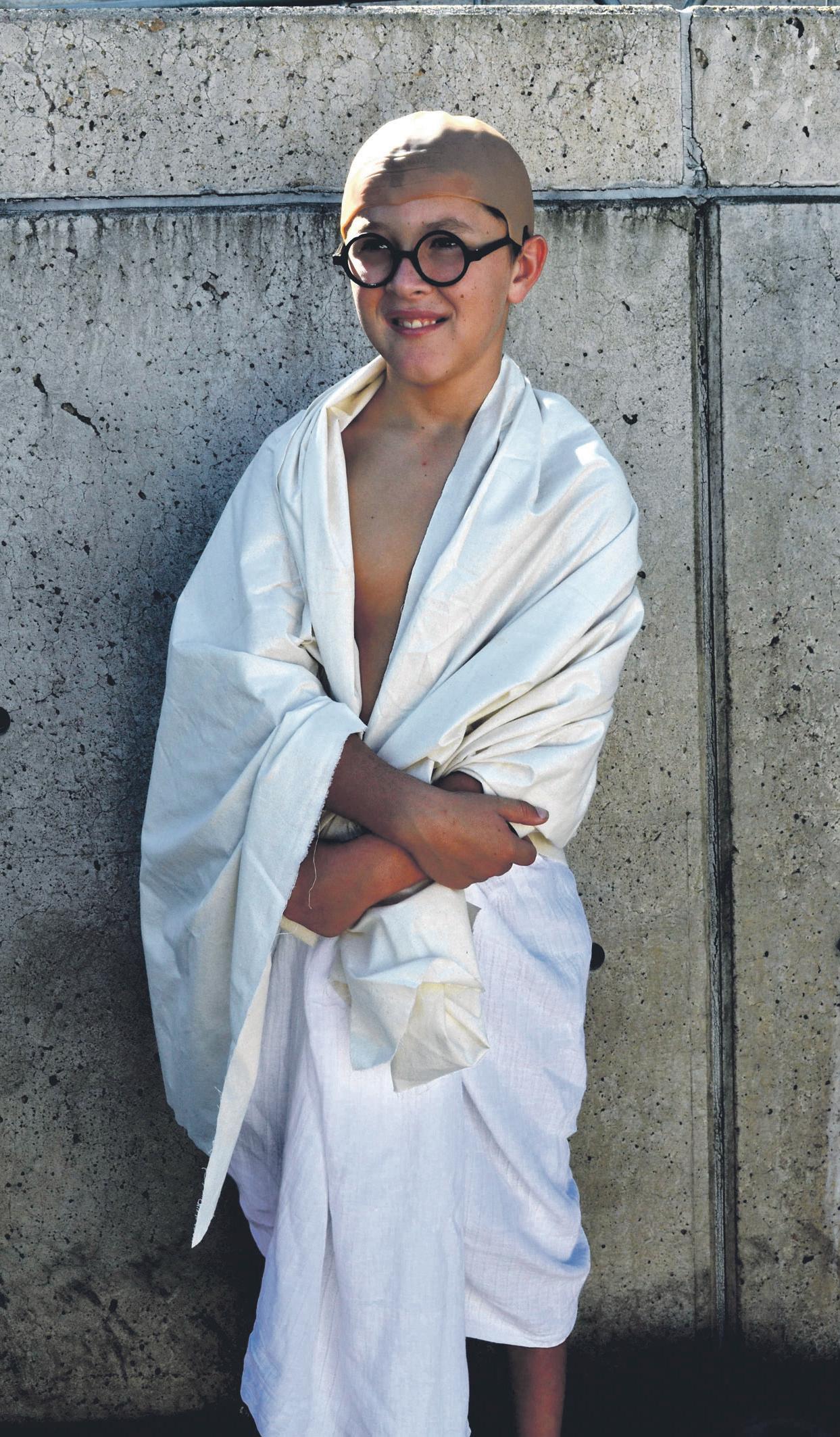
The image was included in Indian Link as part of a large feature story on a primary school program run jointly by six schools in the central
3.
E s T O N l INE
Since its launch in 1994, Indian Link now produces six print publications a month. In addition to this, its fortnightly e-paper is emailed to over 20,000 readers. Last year alone, its website www. indianlink.com.au had 433,000 page views, with 233,000 unique visitors. This large amount of online traffic viewed the wealth of information and entertainment available on the news, entertainment and leisure sections of the site, and is growing day by day. “We have been on the cutting edge of technology since our inception,” commented Publisher and CEO Pawan Luthra.

Not just content with the written word, the
Sydney region. Entitled “India Calling,” the NSW Department of Education and Communities program is aimed at developing an understanding of India and its culture among primary school kids. As part of their year-long activities in this program, the students celebrate India’s festivals, learn the Hindi language, and learn songs, as well as dances from India.
This image was taken on one such celebratory day when teachers as well as students dressed up in Indian costumes.
Ben as the ‘young Gandhi’ with his cotton-draped attire, fake bald head and round glasses, certainly looked the part, showing the confidence of his revered alterego as he posed confidently for photos.
Mala Mehta was thrilled by the award. “If it is anything to do with my bachchas, [young students], it makes me so pleased,” she said upon hearing the news of the award.
Another Indian Link image was also short-listed in the Best Image category. Entitled Designs on Julia, this image by AAP photographer Paul Miller was taken at last year’s India-Australia Friendship Fair and featured Prime Minister Julia Gillard getting a henna tattoo on her hand by mehendi artist Zeenat Lokhandwala.

hugely popular Indian Link Radio is also available on the website. The choice to either stream the radio online, or listen to it through a downloadable smartphone application, has brought in visitors from all over the world.
The online presence has improved dramatically, including the increased use of social media in 2013 (Facebook, Instagram and Twitter), with plans of improving this further.
The Mahatma is reborn - as a young Aussie kid, by Joanne Williamson
Julia Gillard at India Fair by AAP photographer Paul Miller
cOv ER STORy
P UB l I caTION O f T h E yE ar Indian Link
B
8 MARCH 2013 www.indianlink.com.au
The Indian Link website
social justice teaching losing traction
Start from early childhood says the Mahatma’s granddaughter

“Domestic violence as a behaviour is no different whether you are in South Africa, India or Australia; the difference is how it is dealt with. It depends on the resources available in each country, the laws that govern them and the social acceptability”. This comment came from Ela Gandhi, granddaughter of Mahatma Gandhi, on her recent visit to Australia. Ela Gandhi is a renowned peace activist, and a former member of Parliament in South Africa, and former Chancellor of the Durban University. She is currently Honorary International President of the World Conference on Religions for Peace. Ms Gandhi was in Australia to interact with people and organisations to discuss and promote peace and non-violence.
As a social worker, freedom fighter, peace activist, parliamentarian, academic, publisher and author, Ela Gandhi is an extraordinary woman with an extraordinary pedigree. Born in South Africa to Mahatma Gandhi’s second son Manilal Gandhi, Ela grew up in an ashram of the Phoenix Settlement in Durban. She worked actively to support the struggle against apartheid. She was banned from political activism in 1975 and was put under house arrest for nine years. Ms Gandhi continued to work underground and is said to have lost one son to the struggle. She was instrumental in developing a 24-hour program against domestic violence. She is the Founder and Chair of the Mahatma Gandhi Development trust, and is the publisher of Satyagraha, one of the oldest newspapers in South Africa. Ela Gandhi has been the recipient of several awards including the prestigious Padma Bhushan award from the Government of India in 2007.
On her first day in Melbourne, Ms Gandhi was the chief guest at a dinner event hosted by VFS Global Services at Tandoori Den Restaurant in Camberwell. A select audience was invited to meet the

peace icon and interact with her over a sumptuous vegetarian meal. Shabbir Wahid, Director VFS, welcomed the guests and made a brief presentation on domestic violence and the FV initiatives for the Indian community. His presentation outlined the ‘Don’t Suffer in Silence’ campaign funded by VIC Health. The campaign involved distribution of DVDs, posters and brochures to the Indian community through media, grocery stores and at community events. As part of this campaign, interviews were conducted with women experiencing violence, and with psychologists. Referrals were made to mainstream services in a bid to assist victims of domestic violence within the Indian community.

Mr Wahid also spoke at length about the Healthy Relationship in a New Culture (HRINC) initiative funded by FaHCSIA and delivered by Spectrum Migrant Services. The primary objective of this initiative is prevention of violence against women; the aim is to achieve this through respectful
relationships and communications. The HRNC recently offered a 16-hour training of 4 hours each to 30 participants from the community who graduated as healthy ambassadors. Some of the participants were present at the dinner event to share their experience with Ela Gandhi and other distinguished guests that included business and community leader Neville Roach AO, Cardiologist Dr Jeetu Vohra OAM, VMC Commissioner Srini Srinivasan, President of Bhartiya Vidya Bhavan Australia Gambhir Watts, among others. Later during her visit Ms Gandhi also visited the Victorian Women’s Domestic Violence Crisis Service (WDVCS) at North Melbourne to discuss domestic violence against women.
In Melbourne, Ms Gandhi gave a public lecture at the Australia India Institute (AII) chaired by Dr Thomas Weber, Faculty of Humanities and Social Sciences at La Trobe University, and another at UNSW, Sydney entitled, Building a culture of nonviolence: the legacy
of Mahatma Gandhi. This lecture was introduced by His Excellency Mr. Biren Nanda, High Commissioner for India. Ms Gandhi’s lectures focused on the treatment of women by society, and the importance of developing a culture of nonviolence and strategic interventions in education by introducing nonviolence at various levels of academia. She feared that social justice teaching was losing traction. “The present education system is producing highly skilled people but it is not producing good human beings,” she said. “There needs to be changes to the school curriculum so that young people learn about non-violent communication in their early years and through to their tertiary education.”
In Sydney, Ela Gandhi officially opened the International Centre of Non-violence, Australian branch, in partnership with Bharatiya Vidya Bhavan Australia. She is currently the vice chairperson of the International Centre of Non-violence in South
There needs to be changes to the school curriculum so that young people learn about non-violent communication in their early years and through to their tertiary education
Ela Gandhi
Africa. The centre has been working for the past 43 years to educate children on non-violence. The Sydney centre is also expected to examine education as a way of transforming the community. According to the soft spoken, 72 year old, Ela Gandhi Mahatma Gandhi’s essential values of nonviolent action, social justice and respect for women and nature remains alive at all times, and continues to be relevant in the current time, but she admits there are challenges to overcome in adopting the non-violent approach.

INDIAN LINK
SPE c IAL REPORT
BY PREETI JABBAL
MARCH 2013 9
talking about Indo-oz relations

Indian goodwill delegation tours major Australian cities to encourage mutually beneficial relations
Agoodwill delegation of Indian parliamentarians, led by Minister of State for Parliamentary Affairs and Planning, Rajiv Shukla arrived in Melbourne recently. The delegates also visited Canberra, Perth and Sydney. They were offered a warm welcome by the Consulate of India in Melbourne and a reception was held in their honour at the Indian consulate in St. Kilda, hosted by the Acting Consul General of India, Raj Kumar. The reception provided the parliamentarians an opportunity to network and meet with media, leaders and members of the community.

During their visit, the delegates also visited Parliament House at all the cities on their itinerary. They took time to visit some local attractions including a much -anticipated trip to Melbourne Cricket Ground. In a bid to exchange ideas and resources with Australia, the delegates engaged in talks with Deputy Leader of the Opposition Julie Bishop; NSW Premier Barry O’Farrell; Minister for Foreign Affairs Bob Carr;
Premier of Western Australia Colin Barnett; and Speaker of the House of Representatives Anna Burke.
According to Mr Shukla, Prime Minister Julia Gillard’s visit to India in October 2012 was a milestone in Indian Australian relations. “There is a large scope to develop trade links as well with Australia, as the trade with India for Australia is worth USD 21 billion,” said Mr Shukla. According to him, efforts should be made to correct the

trade imbalance between India and Australia and the two countries should aim to more than double their trade to $50 billion annually. He continued to say that resources of both the countries should be utilised on health, education and other developmental projects. He urged the Indian diaspora in Australia to be actively involved in the process.
Mr Shukla is currently chief of the Indian Premier League (IPL).
He was also a former journalist for Indian Express and Sunday Observer, and has contributed to several publications. Other delegates that accompanied him included the son of former Prime Minister Chandra Shekhar and leader of the Samajwadi Party Neeraj Shekhar; ShantaramLaxman
Naik from Indian National Congress (Goa); Vilas Baburao Muttemwar from Nagpur; Thaawar Chand Gehlot andRamen Deka
of the BJP; and Bhartruhari Mahtab of the Biju Janata Dal (BJD) in Orissa; Jagdish Sharma from Janta Dal Bihar; Sudip Bandyopadhyay MP from Calcutta; TK Rangarajan from Communist Party Tamil Nadu; and Anant G Geete MP from Rajgad and Shiv Sena party member. J Helen Davidson MP from Tamil Nadu was the sole female representative to accompany the delegation.
www.indianlink.com.au cOMM u NITyS c ENE

MARCH 2013 11 INDIAN LINK
Walking for children

Colourful characters on fundraising walk for FOTCF, but not many sarees

on Sunday, February 24, Jells Park regulars witnessed an unusual sight as they shared their daily walk, run and bike path with people dressed up as Star Wars characters, girls in sparkly disco outfits and hundreds of people sporting neon green. It was 9am, the weather was promising and nearly 200 people were ready and rearing to go on the inaugural walk for Monash’s Children organised by Friends of the Children Foundation (FOTCF) and Monash Health Foundation.

Monash Council Mayor Cr Micaela Drieberg flagged off the event as enthusiastic supporters set off on their choice of a 5, 10 or 15km run, or walk. The first official walk was held to raise funds for the purchase of a special vest needed to help treat young patients with cystic fibrosis. The vest assists in the treatment by loosening the fluid around the lungs when strapped around a patient. The vests costs $12,000 and can help in reducing the time spent in the hospital, and result in fewer admissions to the hospital.
It was an eclectic group of people who came to support the Monash Children’s walk, including staff from Monash Children’s Hospital. Braving the heat and flies, the supporters finished their chosen course and a sausage sizzle awaited them at the finish line. Monash community is a multicultural one including many nationalities and a sizable population of Indian migrants.
Said Shashi Kochhar from The Friends Of The Children Foundation, “It was a wonderful sight to see the green brigade
staGE
sPirit of india – cElEbration of indian mUsic and dancE
heading for their walk/run in unison. Their willingness to support us was very encouraging and we are hoping to turn this into an annual event”.
It was, however, disappointing to see the lack of Indian presence at the walk. We may not come from a ‘sporting nation’ but we are definitely people who can be
Tuesday, 12th March 2013 at 7.30 p.m. at elisabeth Murdoch hall, Melbourne Recital centre. organised by nataraj cultural centre Inc., will feature the renowned carnatic singer Sudha Ragunathan and Manjiri kelkar, with her melodious voice and fine sense of intonation. Visit www. melbournerecital.com.au Tickets: adult $50; concession $40 Phone: 9699 3333
sahitya sandhya
saturday 16th march, at kew library (corner of cotham Road and civic Dr kew 3101, Melway reference 45 D6). Apane log, apani baatein in anticipation of holi. kavita (poetry), short stories and jokes. All are welcome to attend.
Sahitya sandhya dates for 2013: 25 May, 20 Jul, 21 Sep, 23 nov.
sporty, generous and supportive, especially when it comes to children. Hopefully there will be better participation from Indians to this worthwhile event next year. Till then “keep giving that they may grow”.
A ‘young at heart’ themed dinner dance was also organised by FOTCF at Richmond Town
What’s on
lehrein -theatre and dance extravaganza
saturday 16th march from 5pm to 7pm at the chandler community centre, 28 Issac Road, keysborough. Presented by kalavishkar Innovative Art Academy. Tickets: $10, children under 5 are free. call Manasi on 0419815323 or visit www. kalavishkar.com.au
ka kanji no ka
saturday, 16th march from 7pm onwards at The national Theatre, St kilda. Gujarati and Bollywood comedy king Tiku Talsania live in his successful and popular Gujarati play ‘ka kanji no ka’, a new comedy play from kanji Series. Tickets: $29, $39, $49 $59. contact kaushal Modi on 0424700226; Dipendrasinh Gohil (Bapu) 0433976697. Gujarati food available at venue.
fEstival
holi fair
sunday 24th march, 11am to 5pm at Bundoora
Hall earlier this month to raise funds to assist the Monash Children’s Hospital.
FOTCF was founded in 1988 to raise funds and work with organisations that are involved in providing better health and education for children. It is a notfor-profit organisation focused on creating a better future for children.
Park, 1069 Plenty Road, Bundoora, VIc organised by Fusion entertainment. Ticket: $5 entry. For stalls and sponsorship, call Gaurav Verma on 0422 655 710.
hsv holi mela
saturday 30th march, 10am onwards at the Shiva Vishnu Temple, 52 Boundary Road, carrum Downs VIc. Free event organised by hindu Society of Victoria.
aiii holifair
monday 1st april, 10am onwards at the Sandown Race course, Springvale, VIc. Mika Singh live and lots of entertainment. entry tickets available at venue. For sponsorship call Yogen on 0403 337 142.
sPIRITUAL
yoga interactive session
sunday march 17, 2:30pm – 4pm at Fregon hall.
Yoga benefits and advantages interactive session
Over the years the FOTCF has raised substantial funds for the Royal Children Hospital’s Good Friday Appeal, Monash Children Hospital and Disability Sports and Recreation. Their aim is to raise $75,000 this year with the help of supporters, sponsors and fundraising events.
Preeti Jabbal
will be held. organised by the Melbourne kannada Sangha. light snacks, coffee/tea shall be provided. For more details visit www.mks.org.au
misc
australian sikh Games 2013 29-31 march at Monash university, South east Melbourne. Teams from Malaysia, new Zealand, Singapore, Indonesia, hong kong, uk and canada will participate. organised by VSA, the event will have around 200 participants, competing in 8 events – hockey, soccer, cricket, badminton, volleyball, netball, tennis and athletics.
fUndraisinG
Good friday Walk
friday 29th march, 8.30am for 9.00am start from clayton Railway station. Annual 28km Good Friday walk to etihad Stadium to raise funds for the Royal children’s hospital projects with Good Friday appeal.
12 MARCH 2013 www.indianlink.com.au cOMM u NITyS c ENE




MARCH 2013 13 INDIAN LINK

14 MARCH 2013 www.indianlink.com.au



MARCH 2013 15 INDIAN LINK
salute to the Sun
Brighton beach was witness to over a hundred people performing 108 divine salutes
If you happened to be driving past Brighton beach very early on Sunday February 24 an unusual sight would have greeted you. You would have witnessed a gathering of over 100 people performing the Surya Namaskar (salutations to the Sun). Hosted by the Vasudeva Kriya Yoga, the second Surya Yajna with 108 Surya Namaskars, was conducted amidst great enthusiasm at a park close to the beach in Brighton.
The stars were still out in the sky when the crowd gathered to face the sun at 5.30am. People of all ages and stages attended with the aim of completing 108 salutations with each session made up of 16 steps. In what could only be termed as a rapid fire round, the namaskars were completed with a 5-minute break in-between each session. By the end of two and a half hours, those who lasted the distance completed nearly 1728 steps (asanas).
The event started with a warm up exercise, and Rajendra Damodara Yenkannamoole from Vasudeva Kriya Yoga explained

the meaning of the mantras and the importance of Surya Namaskar in maintaining good physical and mental health. “By doing Surya Namaskara, the energy level in the body increases, legs, hands and back are strengthened and fat is reduced. The practice detoxifies us, energises the internal organs and increases the capacity of our lungs. It is known to relax and de-stress the mind,” he stated.

According to Rajendra, there
are immense benefits in doing the Surya Namaskara. “Our Prana Shakti increases, our radiance increases, it strengthens our immune system, eye sight improves, digestion improves, life span increases and our over all health improves. Above all we are invoking the grace of the Lord in the sun to illuminate our path,” claimed Rajendra.
Following the event Rani, one of the participants, said, “It was
a spiritual experience not only for me but for the many people who were there: the power of pure collective consciousness was at its best during the pre-dawn hours! It is not possible to explain the divine experience, but most of us felt it. Further, I was able to complete all the rounds of Surya Namaskar, despite my physical condition. Surprisingly, no issues occurred with my right arm during and after the yagna! I was surprised with
myself - the power of divinity as all of us dedicated our sadhana to Surya Bhagwan. Thank you again for creating this golden opportunity for us all, which was an experience of a lifetime.”
Vasudeva Kriya Yoga organisers hope to hold this free event in the future on an annual basis in Melbourne and attract a wider audience, including mainstream Australians. ramandeep Kaur

16 MARCH 2013 www.indianlink.com.au cOMM u NITyS c ENE



MARCH 2013 17 INDIAN LINK
People Parties Places
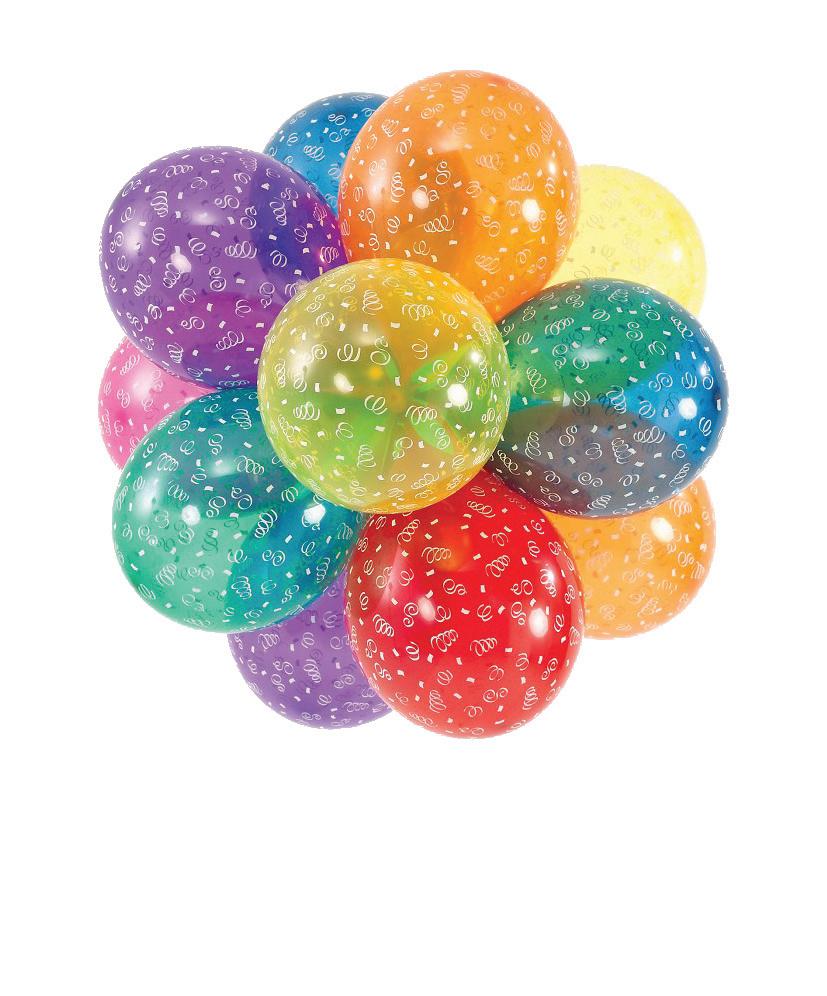
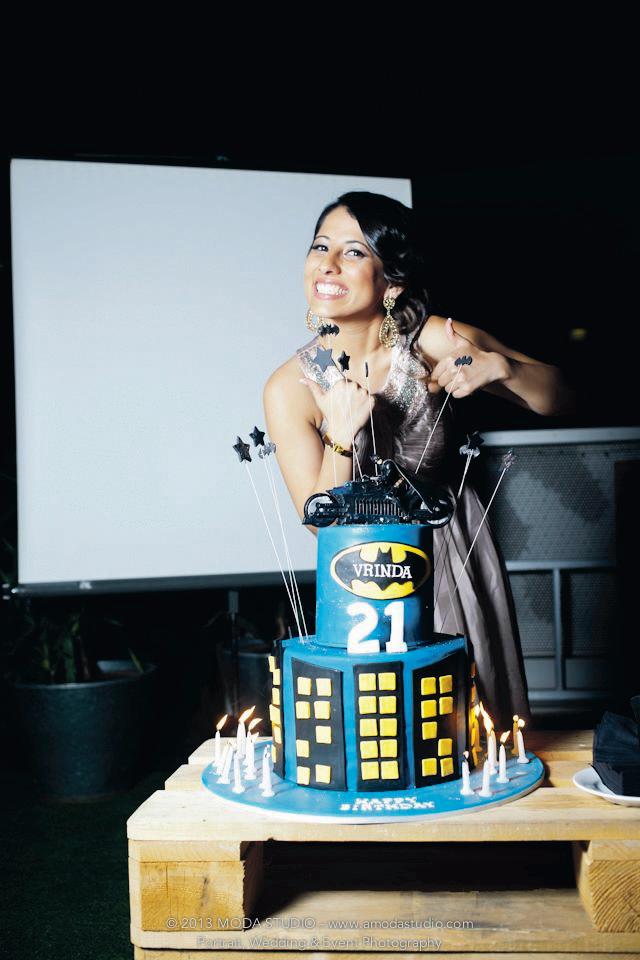





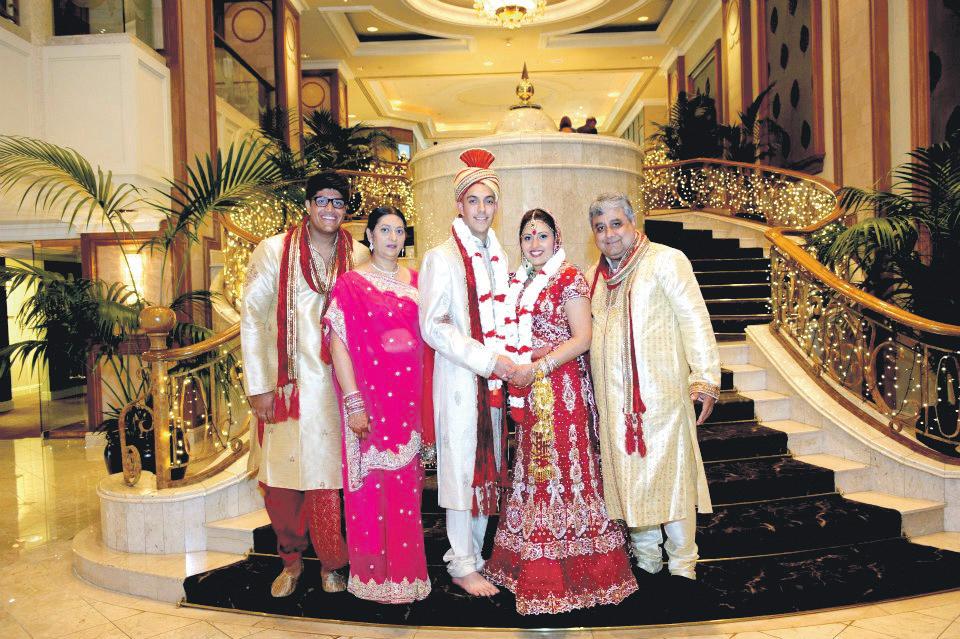
18 MARCH 2013 www.indianlink.com.au THIS MONTH
Visiting from India, Dara and Sailaja Nehru (centre) get together with friends and family to celebrate their 40th wedding anniversary at the Melbourne home of their son Visal.
Harlin Gandhok celebrated her milestone birthday with family
Do you have a photo for this page? Email it to info@indianlink.com.au
Vrinda Singh celebrates her 21st with Mom Sujata, dad Pankaj and brother Kartik. And Batman, of course!


MARCH 2013 19 INDIAN LINK








































































































20 MARCH 2013 www.indianlink.com.au FOR IPHONE IPAD AND ANDROID indianlink.com.au 18000 15 8 47 ANYWHERE ANYTIME!! Tune in Indian Link RADIO APP Free

MARCH 2013 21 INDIAN LINK
A long way from home
 By KUDRAT SINGH
By KUDRAT SINGH
The Road Home is a film that talks about a problem that most Indians living outside India face today, the need to teach our children about their heritage. This film looks at this situation from the child’s point of view and touches upon the sensitive nature of belonging and knowing your place (culturally) in the modern world.
Selected for the 2012 Academy Award “live action short films”, The Road Home is directed and produced by London Film School graduate Rahul Gandotra. The film focuses on the quest for belonging faced by its young protagonist, a British born Indian, who is sent to the Woodstock boarding school in Mussoorie, India, to learn about his roots. The young boy faces the cruel taunts of the other local Indian children who see him as a foreigner, an imposter, and zone in on his vulnerability of being out of place. The boy finds no other option but to run away –which leads him on an incredible coming-of-age journey through the picturesque mountains of north India.

The film, part of Gandotra’s graduating work, was filmed on location in the Himalayas. It won him a jury prize at Palm Springs; was nominated at the British Independent Film Awards; shortlisted for the BAFTAs; and shortlisted for an Oscar in the short film section for 2012.

Rahul Gandotra was drawn

to the project given his own background and experiences as a second-generation migrant. He was born in Belfast, Northern Ireland, and has lived in eight countries since then - all four parts of the UK, Saudi Arabia, India, and the United States. Gandotra says of the film, “It is semi-autobiographical in that I experienced what Pico (the protagonist in the film) experiences, and went to the boarding school in the film. Before going there, I had been born in Northern Ireland and lived mostly in the UK. So when I arrived at the boarding school at age 9, I insisted I was British, despite being born to Indian
parents. People would ask me, ‘Are you ashamed of your roots?’ not realising that I was defending a feeling I had inside of being raised and brought up in England.”

This experience has led to Gandotra exploring the very interesting and relevant sociologic subject of the “third culture”. He says he discovered this term when researching the subject matter for his short film. He found the term and its explanation by sociologist Ruth Useem, to be rather exact in its description of the “subculture” created by children living within multiple cultures during their developmental years. The term originated when Useem noticed that expats seemed to
form their own subculture that wasn’t quite the foreign culture they were living in, or their own home culture, but a unique blend of the two.
More recently the term describes children who have lived in multiple countries and cultures during their developmental years (from birth to eighteen) so that they are a mix of all the cultures they’ve lived in. These ‘Third Culture Kids’, as they’re called, have less in common with people who are biologically or ethnically similar to them and feel more in common with others who have moved around, even though ethnically and biologically they may drastically differ.
On the back of the success of his short film, Gandotra is currently in the process of producing a feature length film.
With a longer time length, the film hopes to be able to further develop the characters and story. This will most likely see Gandotra further developing the ‘third culture’ theme for the film. No doubt this feature film will cause quite the buzz when it is released in cinemas worldwide.
22 MARCH 2013 www.indianlink.com.au
diaspora
“People would ask me, ‘Are you ashamed of your roots?’ not realising that I was defending a feeling I had inside of being raised and brought up in England”
Rahul Gandotra
A critically acclaimed short film addresses issues of identity and belonging faced by children growing up in cultures other than their own
A scene from The Road Home by London-based film-maker Rahul Gandotra
chat online OR call 1300 368 318 Email: info@paylessflights.com.au Cheapest Air Fare Book Online at www.paylessflights.com.au International and domestic Happy hours Every Friday Starting sharp 9 AM Till 9 PM
Rahul Gandotra


MARCH 2013 23 INDIAN LINK
A child, dressed as Lord Shiva, plays with sand on the banks of the Sangam in Allahabad during the Maha Kumbh. The Kumbh Mela, which runs from January till March takes place every 12 years in Allahabad.

Serious lapses in $9.5 billion farm loan waiver scheme: CAG
The government has again come under attack for a corruption scandal -- this time related to the 2008 Rs.52,000 crore ($9.5 billion) farm loan waiver scheme, in which the official auditor has pointed out serious lapses and malpractices.
In a report tabled in parliament on the “Implementation of Agricultural Debt Waiver and Debt Relief Scheme, 2008”, the Comptroller and Auditor General (CAG) said there were irregularities in at least one in five cases.
Thousands of ineligible persons were given the benefits while deserving ones were denied, CAG said in the report.
“Overall, the performance audit revealed that in 20,216 or 22.32 percent of the 90,576 cases test checked in audit, there were lapses/errors which raised serious concerns about the implementation of the scheme,” the CAG said.
Prime Minister Manmohan Singh’s government had announced a debt waiver for farmers across the country in 2008, a move that analysts say helped the government win the 2009 general election.
“Farmers who had taken loan for nonagricultural purposes or whose loans did not meet eligibility conditions, were given benefits under the scheme,” the CAG said.
The scheme was originally estimated to benefit 3.69 crore marginal and small

farmers and 60 lakh other farmers.
Over the last four financial years, the government has waived more than Rs.52,000 crore in loans related to approximately 3.45 crore small, marginal and other farmers.
“It was found that out of the 9,334 accounts test checked in audit across nine states, 1,257 accounts, or 13.46 percent were such who were found to be eligible for benefit of Rs.3.58 crore under the scheme, but were not considered by the lending institutions while preparing the list of eligible beneficiaries,” the government’s auditor said.
Terming the incident a big “scam”, the main opposition Bharatiya Janata Party (BJP) demanded a Central Bureau of Investigation (CBI) inquiry to unearth the real extent irregularities.
“CAG has found out that 13 percent eligible farmers were not considered by lending institutions. Also 8.5 percent ineligible beneficiaries got benefits,” said BJP spokesperson Prakash Javadekar.
Hyderabad blasts: Court warrants against Riyaz Bhatkal
A Delhi court issued non-bailable warrants against banned terror outfit Indian Mujahideen founder Riyaz Bhatkal and nine other alleged operatives in the Feb 21 Hyderabad twin blasts.
A National Investigation Agency (NIA)
special court, during an in-chamber hearing, issued the warrants against Riyaz Bhatkal, suspected to be based in Pakistan, and nine other terror group operatives: Iqbal Bhatkal, Mohsim Chaudhary, Amir Reza Khan, Shahnawaz Alam, Asadullah Akhtar, Ariz Khan, Mohd. Khalid, Mirza Shadaab Beg and Mohd. Sajid.
District Judge I.S. Mehta also sent two alleged IM operatives Syed Maqbool and Imran Khan back to judicial custody till March 13, after expiry of their five-day NIA custody.
The NIA questioned the two over the Hyderabad twin blasts.
The agency told the court that Maqbool and Khan were taken to Hyderabad and they revealed some important facts about the blasts, court sources said.
Maqbool and Khan had in July 2012 surveyed Hyderabad’s Dilsukhnagar, where the Feb 21 blasts took place, the NIA said.
The NIA told the court that the conspiracy behind the Hyderabad blasts was hatched by IM modules and they also moved an application for issuing production warrant against alleged IM operative Obaid-ur-Rehman, currently lodged in a Bangalore jail.
Allowing the application of NIA, the court issued production warrant against Rehman. The Hyderabad twin blasts, that killed 16 people and injured 117, were
carried out on the instructions of Riyaz Bhatkal, according to the NIA.
A democratic, secular Bangladesh in India’s interest: President
President Pranab Mukherjee said a “democratic, secular and progressive”
Bangladesh was in India’s interest and India had conveyed the need to maintain communal peace and harmony at a time the neighbouring country is rocked by clashes that has seen over 70 deaths.
“A democratic, secular and progressive Bangladesh is clearly in India’s interest,” the president said in a statement on his way back from his three-day maiden visit to Bangladesh.
“In this context, we conveyed to all our interlocutors the need for an inclusive political process; and the maintenance of communal peace and harmony.”
He said India was hopeful that internal political differences in Bangladesh can be resolved through dialogue “and that the rights of all communities would be fully respected”.

Mukherjee was referring to the clashes in Bangladesh between the Jamaat-e-Islami and the authorities recently that has left over 70 people dead. The Jamaat, a key ally of the opposition Bangladesh National Party, called a hartal or strike March 3 and 4, during the Indian president’s state visit.
Earlier, Bangladesh Foreign Minister Dipu Moni had compared the violence unleashed by the Jamaat to that by pro-Pakistani elements in 1971. She had said the Islamists were attacking temples and burning the homes of minorities in Bangladesh.
Mukherjee said he was returning from Bangladesh “with the hope and confidence that India and Bangladesh can together build a better future for our people, and that our relations can serve as an example for the rest of South Asia”.
“My visit has served to reinforce the special importance that the government and people of India attach to developing the best possible relations with an important and large neighbour like Bangladesh.
“We believe that a strong, stable and rapidly developing Bangladesh is in the interest of not only its people but in the interest of the entire region. I, therefore, assured the government and people of Bangladesh that India will be a willing, longterm development partner,” he said.
Mukherjee said he was “impressed by the
www.indianlink.com.au i N dia N NEWs
Photo: AP
vibrancy” of its people.
“Like India, they have a large population of youth. They are committed to democracy, tolerance, an inclusive social order, free media and building a modern and progressive state,” he said.
“They seek to consolidate the institutes of democracy and keep alive the spirit of their liberation struggle. We wish them well in this great endeavour,” he added.
He also stressed on the need to enhance greater people to people exchanges.
“I made it clear that we wish to grow together with Bangladesh because our destinies are interlinked. Apart from bilateral cooperation, we are now preparing to expand our cooperation at the subregional level. This holds great promise for the security, growth and connectivity that can transform the entire region,” he added.
US honours Indian as exchange alumni
India’s Shubhalaxmi Vaylure has been selected by US State Department as International Exchange Alumni Member for March for her dedication to building greater environmental awareness in India.
Dr Shubhalaxmi’s will be recognized on the International Exchange Alumni website, the Bureau of Educational and Cultural Affairs’ official website for the more than one million Department-sponsored exchange alumni worldwide.
Shubhalaxmi first came to the US in 2003 as part of the Fulbright IndoAmerican Environmental Leadership Programme which took her to the University of Montana to study educational nature centres, the State Department announcement said.
Upon returning from this programme, she drew inspiration from her Fulbright Programme as she implemented innovative educational Programmes at the Mumbai Conservation Education Centre.
Shubhalaxmi went on to study non-profit management at Boston University through the Hubert H. Humphrey Programme. This experience enabled her to bring her environmental advocacy to a new level.
Returning from the Humphrey Programme, she developed online courses in natural history and worked in the organization development sector of the Bombay Natural History Society where she conducted staff training workshops and boosted fundraising and marketing efforts to benefit the Centre.
In 2012, Dr. Shubhalaxmi and a team of her alumni peers won support from the State Department’s Bureau of Educational and Cultural Affairs Alumni Engagement Innovation Fund to provide management trainings for professionals from Indian environmental NGOs. The team has already trained nearly 150 individuals.
Shubhalaxmi Vaylure loves nature, according to her official biography. On her Facebook page, her “dream house” overlooks a lush, marshy, nature scene. “It was in my childhood that I got the nature bug,” she said. “I spent my growing years surrounded by trees and bees. Science was my favourite subject.”
Indian-origin science writer wins British Physics journalism prize
Anil Ananthaswamy, a London based Indian
origin writer, has won the inaugural Physics Journalism Prize sponsored by the Institute of Physics (IOP) and the Science and Technology Facilities Council (STFC).
The prize is designed to inspire the next generation of physicists by encouraging journalists to grapple with often complex topics and help spread excitement about the subject, according to an IOP release forwarded by the American Astronomical Society.
Ananthaswamy, a consultant at New Scientist Magazine and author of The Edge of Physics, has won the prize for his article Hip Hip Array, which focuses on the Square Kilometre Array, an international project to design and build the largest radio telescope ever conceived.
“Anil Ananthaswamy is being awarded the prize for writing a feature which brings one of the world’s most exciting astronomical endeavors to life -- the Square Kilometre Array,” said IOP President Sir Peter Knight.
The Physics Journalism Award offers the prize of an expenses paid trip to Japan, to visit world-leading facilities carrying out research at the frontiers of physics.
On winning, Ananthaswamy commented, “Writing about physics, especially about the work being done in remote, difficult and sometimes hostile environments, is a special pleasure. Winning an award for doing what I love to do is just icing on the cake. I truly appreciate the recognition.”
Mark Henderson, Head of Communications at the Wellcome Trust and former Science Editor at The Times, said, “Anil Ananthaswamy has an eye for illustrative detail of which the best travel writers would be proud.”
Kirsten Bodley, Chief Executive of STEMNET, said, “The winning article on the competition for the Square Kilometre Array will be particularly inspirational to young people, offering them an opportunity to see how fascinating contemporary physics research can be.”
Commenting on the winner’s choice of topic, Terry O’Connor, Head of Communications at STFC, added, “The Square Kilometre Array will open new avenues of research, and delve further back into the formation of the universe.”
A million-dollar prize for Delhi slum education project
A “hole in the wall” experiment in a Delhi slum, demonstrating how children collectively can teach themselves complex issues, has won educator Sugata Mitra the first one million dollar 2013 TED Prize.
Mitra, an education technology professor at Newcastle University in the United Kingdom, said he will use the prize, awarded by TED, an annual global ideas conference, to launch a global initiative for self-directed learning that builds on his discovery.
“My wish is to help design the future of learning by supporting children all over the world to tap into their innate sense of wonder and work together,” he said in his acceptance speech Tuesday at the TED 2013 conference in Long Beach, California.
“Help me build the School in the Cloud, a learning lab in India, where children can embark on intellectual adventures by engaging and connecting with information and mentoring online,” Mitra said outlining
his plan to build a child-driven virtual school.
“I also invite you, wherever you are, to create your own miniature child-driven learning environments and share your discoveries,” he said asking the global TED community to make his dream a reality with Self-Organized Learning Environments (SOLEs) in homes, schools, and community programmes worldwide.
The TED Prize is awarded annually to an exceptional individual who receives $1,000,000 and the TED community’s resources and expertise to spark global change.
According to TED, after a series of experiments revealed that groups of children can learn almost anything by themselves, Mitra began his pursuit to inspire children all over the world to get curious and work together.
In 1999, Mitra and his colleagues dug a hole in a wall bordering a slum in Kalkaji in south Delhi, installed an Internet-connected PC, and left it there (with a hidden camera).
Soon, they saw kids from the slum playing with the computer, learning English and searching through a wide variety of websites on science and other topics, and then teaching each other.
Mitra and his colleagues carried out experiments for over 13 years on the nature of self-organized learning, its extent, how it works and the role of adults in encouraging it.
Lara Stein, director of the TED Prize, said Mitra “has not only created a remarkable body of research around selfdirected learning, but he has support from teachers around the world who are tapping into his methodology with great success.”
AIFF happy with positive reaction from corporates
The All India Football Federation (AIFF) was happy with the positive reaction they got from 30 interested corporate groups, who have shown interest in bidding for two new teams for the 2013-14 I-League.
Prominent groups like Hero Motors, Sahara, GMR, Venky’s, Piramal, Dodsal Group, IL&FS, JSW, and DSK attended the Open House session at the Football House. AIFF president Praful Patel said it was important for all the clubs to have their own infrastructure.
“Take it from me; this initiative will help all existing clubs find partners. Clubs will fulfill the club licensing criteria which is very essential for development infrastructure and youth development. Every English Premier League club has a ground, which they call their home ground. Here no club has that.
“In Kolkata four teams use the same ground. Now with two new clubs backed by corporate bodies coming up, these issues are expected be sorted out as they will be under the club licensing criteria. All the other existing clubs will follow suit and in the process we can dream of a better League and perhaps one day compare with the best Leagues in the world,” he said.
Patel said that the AIFF will host a similar Open House in Dubai by the end of this month to attract foreign investors from Gulf and Europe. The AIFF has no objections if any of the Indian clubs want to partner an overseas club as a co-branded unit.
I-League chief executive Sunando Dhar told IANS that the AIFF was happy with the response they received from the corporates.
“Today some 30 corporates turned up for the meeting. We are happy with the response that we got from the corporates,” he said.
AIFF vice-president Subrata Dutta told IANS that the corporates were asked to fulfill two criteria - invest in infrastructure for the next five years and that they should bid for any city except from states of Goa and West Bengal.
“We told the corporates that we want clubs from north, northeast, south and western India. We also want them to invest in infrastructure for the next five years,” he said.
Sahara are interested in fielding a team from Lucknow and GMR from Hyderabad. Both Sahara and GMR own Indian Premier League (IPL) franchises in Pune and Delhi, respectively.
Abhijit Sarkar, head of corporate communications of Sahara, was all praise about the initiative.
“This is an excellent initiative from AIFF. Football needed this to grow and I am glad that it is finally happening. There is market in India for the sport which is so popular here,” he said.
The AIFF is also planning to keep the two new teams safe from relegation for the next two years.
The process of registering new teams is likely to be completed by the end of April. It will help the two new teams to recruit footballers when the transfer window opens up June 9.
Two teams - ONGC and Air India - are likely to be dropped from the I-League after they failed to fulfill the Asian Football Confederation (AFC) club licensing criteria despite repeated reminders.
Kolkata exhibits unknown women freedom fighters
Heroic acts of lesser-known women revolutionaries from 20th century undivided Bengal have come to life through rare photographs at the Women Revolutionaries of Bengal exhibition that began in Kolkata.
“We gathered the photographs based on Intelligence Bureau files. We found mention of 173 women convicted during the early part of the 20th century from undivided Bengal. Out of these, 118 have been displayed at the exhibition,” Simonti Sen, director, West Bengal State Archives, said.
The black and white photographs of the convicts from areas like Faridpur, Chittagong and Kolkata are accompanied with write-ups to elucidate their roles in the freedom struggle.
“All of them were convicted for various reasons during the period from early 1920s to late 1940s. Some were interned, some externed, while some were imprisoned. Most of them were from the eastern part of the then undivided Bengal,” Sen said.
According to Sen, the exhibition will be an enriching experience for students as well as history scholars.
“Text books mention women freedom fighters like Kalpana Datta and Pritilata Waddeddar. But these women are never encountered in text books. Scholars can use them to study further,” said Sen. IANS
MARCH 2013 25 INDIAN LINK i N dia N NEWs
Looking back
Snapshots from the homeland lead to HSC success for visual arts

student Tanaya Deshpande
India, it is said, is an amazing place for photography.


For budding Sydney photographer Tanaya Deshpande, her native India turned out to be a wealth of opportunity – and a cause for HSC success.
The Turramurra youngster picked photography as her
medium for her Year 12 visual art course last year. Tanaya’s major work, entitled Made in India, is based on a series of stunning images from her homeland. It won her a Band 6 result.
“I was looking for the real India, stripped back from the commercial,” Tanaya, who finished her HSC at Pymble Ladies College (PLC) in 2012, told Indian Link

Getting down to the bare basics, the young photographer found beauty in shots of nature, just as much as in those of people.
Poignant photographs of street
kids, the colours of life on streetsides, even moments from the daily routine of life, captured her interest. For sure, you will find hints of the western stereotypes about India – the Taj, elephants, henna tattoos. But this, ultimately, is the beauty of the work: it shows the artist looking at India from the vantage point of a native, as well as that of an outsider.
The striking feature of the composite image is that the individual shots are projected on to the bare backs of human figures.
“My statement is that travel changes you: it leaves a mark on you that stays forever,” Tanaya revealed.
She might as well have been saying that India leaves a stamp on you forever.
The work was presented on 9mm-thick wood, with other photos on thermacol.
It comes as a surprise to learn that Tanaya only took up photography three years ago.
“My uncle is a keen photographer and inspired by him I began to play around with the camera,” said Tanaya.

Her first pieces were based on flowers.
“I wasn’t even going to do visual art as a subject in Year 12,” Tanaya admitted. “It just occurred to me while thinking about my possible subjects that perhaps I should do something creative to get a break from the rigour of other subjects, so I picked it. And then I couldn’t decide between photography and ceramics, both very popular options at my school, and both of which scale well”.
In the end of course, it all
26 MARCH 2013 www.indianlink.com.au arts
y RAJNI ANAND LUTHRA
at India
worked well for the spunky young girl.
“Not only did I finish with a Band 6 in visual art, it also turned out to be my best subject!” she said.
Today much of Tanaya’s Year 11 and Year 12 work is shown as samples for the benefit of younger students at PLC who are starting off in the subject.
Speaking about her school course in photography, Tanaya said, “In my first year in photography in Year 11, I learned all about the camera and how to use it. A lot of it was new to
me, such as ISO exposure and all the jargon! We also learned how to organise photoshoots and did various experiments such as underwater photography, and then went on to Photoshop as well.”
She continued, “By the end of Year 11, I was hooked. I couldn’t wait to get on to my major work for the HSC. Various project ideas came into my head, especially as my teacher said, ‘think big, the world is your oyster’.”
That year Tanaya travelled to India with her family and came back with about a thousand shots on her camera. She knew then
that those photos would form her final work for the HSC.
“Of course, to pick 6 out of the lot was a challenge,” she said with a laugh. “But my teacher helped me as I sorted through them. As I looked at the work of other artists to get a better perspective, the idea came to be that I could project each of my chosen images on to the bare back of a human figure.”
The end result was nothing short of striking.
The work is certainly a pat on the back for this talented photographer.
But the beauty of the work is that it shows the artist looking at India from the vantage point of a native, as well as that of an outsider
Tanaya travelled to India with her family and came back with about a thousand shots on her camera






MARCH 2013 27 INDIAN LINK
Tanaya Deshpande
Realistic recollections
A book about the Indo-China war of 1962 examines events as they unfold in their harsh starkness
No one would be better qualified to write about the Bomdila debacle during the IndiaChina war in 1962 than Major General (retd) Jaidev Singh Datta who was Brigade Mayor of 62 Infantry Brigade deployed to the war. His book Recollections of the Se La Bomdila Debacle 1962 was released recently to commemorate 50 years of the India-China war of 1962. Reconstructing the events in a straightforward and unadorned manner, the author gives an account of things as they happened. He also gets input from the Chinese perspective through material sourced and translated from the official Chinese books: China’s war of Self Defence counter Attack on India published by the Academy of Military Sciences (Beijing), and True History of China Border War by Prof Yan Xun of the National Defense University, Beijing.

According to the synopsis, Major General (retired) Jaidev Singh Datta was born in 1927 in Lahore. After graduating, he got a commission in the Regiment
of Artillery in 1948. He later graduated from Camberley Staff College, UK in 1961. He served as Brigade Major 62 Infantry Brigade at Se La in 1962. During the IndoPak war of 1971, Major Datta served as Colonel General Staff at Amritsar. He commanded the 39 Artillery Brigade at Yol Alhilal near Dharamshala in Himachal Pradesh. In 1975, Major Datta was posted as Military Attache in the erstwhile Soviet Union in Moscow, and was concurrently accredited to Outer Mongolia. From Moscow he went on to serve as Major General Artillery Eastern Command, Calcutta and finally as Major General Administration Western Command Shimla, from where he retired in 1983. After retiring, Major Datta settled in Delhi where he lives with his wife Kushal who helped him in editing the book. His son Satinder (Bunty) Singh lives in Melbourne and his daughter in North Carolina, USA.

Major Datta was in Melbourne recently to visit his family.
Recollections… takes one along on high mountain passes, on foot, through dense forests where soldiers are killed or wounded,
packing up and dispersing to another location not knowing what lies ahead. The writer coveys through his writing, lessons that are to be learnt from the short war, mainly the need for national preparedness, importance of physical fitness and endurance training, higher emphasis on combat survival, better fire control, necessity of realistic training, cooperation and planning with Air Force, better assessment of opposition and minimal breaks in chain of command. The author was privy to all developments and key decisions that led to the withdrawal of the Brigade from Se La. According to Major Datta, the Indian political leaders in Delhi and the Army brass failed to read the Chinese intentions to encroach further into Indian territory, which brought great humiliation to the Indian Army. The Se La debacle resulted in the death of almost 1000 personnel, most of whom never got the opportunity to fight the enemy.
Major Datta’s writing is more like a memoir with discussion of combat, deployment, decision makers and men in the field. The


According to Major Datta, the Indian political leaders in Delhi and the Army brass failed to read the Chinese intentions to encroach further into Indian territory, which brought great humiliation to the Indian Army
attempt is to defend the actions of individual decision-makers (particularly late Brigadier Hoshiar Singh), given the circumstances and tenuous status of the operation. This book belongs with several publications that are attempting to objectively engage
with the events and policies that led up to the armed conflict between India and China. Certainly not a light read, neither bulky nor verbose, this one is for those who like to read about history, strategy and wars - straight and simple.
Preeti Jabbal

28 MARCH 2013 www.indianlink.com.au • Reliable Service and Privacy Guaranteed • Over 25 lenders to choose from • Commercial finance Health check for existing Home Loan “I used to think that all mortgage brokers are the same.... until I met Swati” – Komal Over 18 years of experience in finance industry. Talk to a qualified professional. Dandenong and Springvale Call Swati Palsule on 0411 78 28 18 Authorised Credit Representative 400349 of BLSAA Pty. Ltd. (Australian Credit Licence No.391237) Talk to a specialist for all your Home Loan needs There is no subs T i T u T e for experience. swati@buyerschoice.com.au B oo K s
Is higher education a guarantee of success?

While the government and Universities entice students into taking degrees, will added qualifications ensure a better career?
By SUKRIT SABHLOK

Not too long ago, Senator Chris Evans announced an injection of $67 million in funds for a partnership between universities, schools and state governments. The rationale was simple: help more Australians achieve their goal of going to University. “A university degree gives Australians a greater chance at getting a high paid and high skilled job,” said the Senator.
The Gillard Government believes that higher education should be encouraged, and says its goal is to reach its target of 40 percent of young Australians holding a bachelor’s degree by 2025. That’s despite experts like Tom Karmel, managing director of the National Centre for Vocational Education Research, indicating that there is a risk greater numbers of people pursuing university degrees won’t get a ‘good return’ from it.
Yet since the government spends millions each year subsidising education and making it easy to attend college, there are even more credentialed individuals than ever before. This naturally makes getting a job after graduating more competitive than say in 1991, when only 8 percent of people aged 15 and over held a tertiary qualification. There is – in economic terms – potentially an oversupply of graduates relative to the number of jobs available.
While it’s true that a lot depends on the particular degree you do (the arts degree, forever the butt of jokes, is probably less useful on the job market than a degree in medicine), the debate around university qualifications has raised some valuable questions.
Questions like “Is there a better way to structure our university system, a way that doesn’t load students with unnecessary debt and gives them a realistic chance at getting a job down the track?”
Writers like Tony Featherstone, for example, argue that in business, a more flexible mode of education would better serve companies. Instead of the standard 3 year campus-based degree, why not allow students to gain qualifications while doing work experience and receive on-the-job training? Or why not let them enrol in a short-term or part-time course for subjects, as the need arises?

It’s not an exaggeration to say that the current university system promotes conformity at the expense of lateral thinking and creativity. Many of the world’s entrepreneurs – take Bill Gates or Mark Zuckerberg – were college dropouts who made it big despite, or perhaps because of their lack of formal training. University tends to compartmentalise but the real world isn’t always like it is in textbooks, especially if those textbooks are written by state-funded professors whose theories aren’t subject to the discipline of the market.
Chances are, in a free-market without government crutches, specialisations such as ‘gender studies’ aren’t likely to attract many paying students and will be reliant on philanthropic support to survive.
There would also be significantly fewer economists pontificating about policy issues – in centuries past, economics was considered a hobby, not a profession. Only those disciplines that directly relate to providing a good service – in helping produce computers, cars, trains, or curing cancer – would find large numbers of customers willing to pay for the course.
Without government funding of higher education, there would be no taxpayersubsidised pleasant interludes of sex and parties between leaving school and beginning working life (the laid back undergraduate lifestyle). Moreover, practical business skills such as administration and effective communication might enjoy a resurgence.
None of this is to say that the humanities aren’t worth pursuing or that only knowledge that’s commercially valuable is important.
But it’s a reminder to parents, students and anyone at the beginning of their careers that further education isn’t necessarily a guarantee of success or gainful employment in one’s chosen field. The number of cab drivers in New York City who have degrees should be proof of that. As Michael Ellsberg points out in The Education of Millionaires: Everything You Won’t Learn in College About How to Be Successful, even graduates need to learn how to market themselves.
That’s a lesson that Julia Gillard would be wise to consider before subtly instilling the mentality that tertiary education is an end in itself. It’s not the degree that matters – it’s your street-smarts, creativity and diligence that count.

MARCH 2013 29 INDIAN LINK
opi N io N
It’s not an exaggeration to say that the current university system promotes conformity at the expense of lateral thinking and creativity.
By PETRA O’NEILL
Do you take white or brown sugar with your flat white?”
I was asked, and it might not seem an unusual query, except that I was within the grounds of Wat Chiang Man in Chiang Mai province as monks were chanting their morning sutras, their voices a low and murmuring drone. It is impossible not to feel the pull of centuries, the timelessness of this ancient city though modern day Chiang Mai in Thailand is a city of juxtaposed contradictions from traditional to hip chic, serene to chaotic, old to new.
The ancient kingdom of Lanna, meaning a million rice fields, was an agricultural empire of villages, unified by King Mengrai in the 13th century and ChiangMai, founded in 1296, became its capital.


Blessed with a cooler climate than Bangkok and buffered by mountains, Chiang Mai remained isolated until the railway opened
Chiang Mai in Thailand’s north is an archaeological adventure and a shopper’s paradise
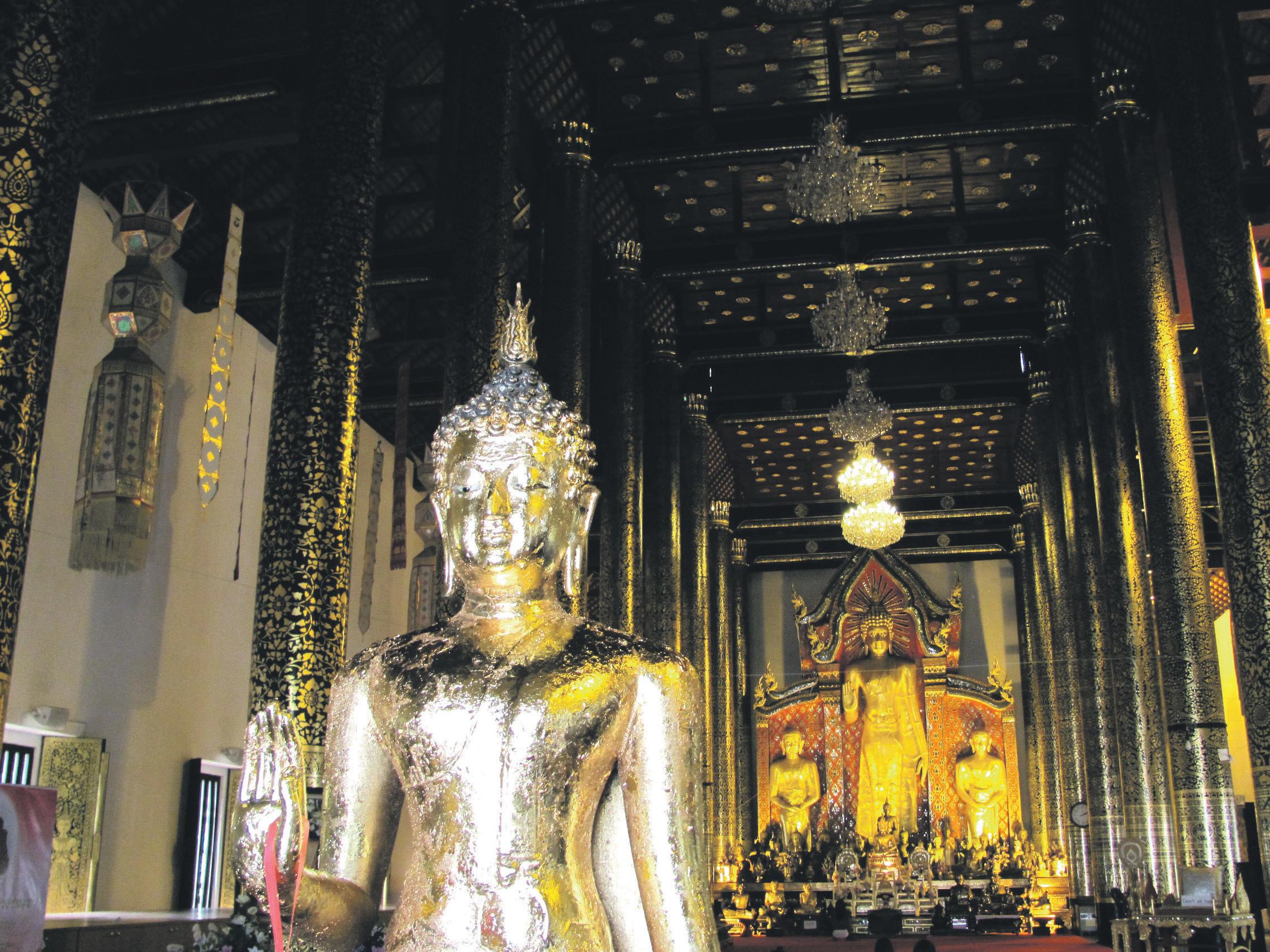
in the 1920s. A recent influx of artists and designers has turned it into a vibrant destination with galleries and boutiques, spas, bars and restaurants that compliment the architecture and rich cultural heritage to be found here.
Though much smaller than Bangkok, Chiang Mai boasts almost as many wats (monasteries) built from the 13th to the 16th centuries when it was a major religious centre for Theravada Buddhism. While many were altered by the Burmese who ruled the city from 1558-1774, the architecture still epitomises the Lanna style with features such as elaborate dark wood carvings on temple pillars and doors.
I started one of many walks at Wat Chiang Man, the city’s oldest temple, built in 1296 with its fine Chedi supported by rows of elephant buttresses; to Wat Chedi Luang, completed in 1481, which houses a giant stupa damaged by an earthquake in 1545. Within the old city walls you will find many more wats, including Wat U-mong, Wat Phra Singh dating from 1345 with exquisite woodcarvings with a lion Buddha, the city’s most revered image; Wat Suan Dok notable for its white Chedi; and Wat Saen Fang influenced by Burmese architecture. You
will also find teak wooden houses, many over 100 years old, characterised by low hanging latticed eaves, slatted shutters and wide verandahs.

On the city’s outskirts, Doi Suthep is the town’s holiest temple that dates from the 14th century, set atop the area’s loveliest mountain range reached via 304 steps, topped by a glittering golden Chedi. On a clear day, the temple affords views across northern Thailand, though the view was obscured by a thick haze on the day I visited it. Also worth a detour is Wat Chet Yot characterised by its square Chedi with seven spires, the design inspired by the temple at Bodhgaya, the site of the Lord Buddha’s Enlightenment.
While the night market is popular with tourists, Waroros Market has been selling fresh produce for over a hundred years, while fabric shops, quirky boutiques and gift shops are nearby. Also, the small Hmong hill tribe market beautiful finely woven embroidery that seems quite old judging by the slightly faded colours, sadly cut up into saleable pieces.
With its mountainous terrain, Chiang Mai has become a base for adventure sports including white

water rafting, trekking and cycling and offers cooking classes, visits to hill tribes and elephant rides.


Lisu Lodge, an hour’s drive north is nestled in a green valley with views overlooking lush terraced rice fields and hills where life remains slow paced. Lisu and Akha, hill tribes originally from Tibet live here, and I enjoyed leisurely bike rides along quiet country lanes to visit their villages. I enjoyed a ride on a gentle mother elephant with her young offspring nudging her as it walked alongside, pausing periodically to drink and splash water as we sauntered besides the river’s edge. The white water rafting trip downstream was exhilarating, with the small Thai boy seated in front of me laughing with excitement!
On arrival at Khum Lanna lodge I was provided with a perfect introduction to traditional northern Thai cuisine, with a tour of the organic vegetable and herb garden, before being set to task to cook a delicious four-course dinner. Northern Thai cuisine incorporates Burmese cuisine, my favourite is the coconut milk soup. A Thai massage provided to all guests by women from the nearby village was the perfect way to end the day, too relaxing to be jolted into consciousness at 4.30am by
Buddhist chanting from a nearby wat, followed by a 5.30am wake up call for a bike ride through the countryside to Phrao town market. But as I sipped on a cup of heady organic locally grown coffee with a large dollop of condensed milk, I thought that rural Thailand, with its hill tribe villages, terraced rice fields and unhurried pace is an altogether enjoyable and restorative destination.
30 MARCH 2013 www.indianlink.com.au
traVEL
Travel noTebook CHIANG MAI
Gett I n G there
Thai Airways International flies to Bangkok with convenient connecting flights to Chiang Mai. Buses and trains depart from Bangkok regularly.
Gett
I n G A round
While I preferred to walk, bicycles are a great way to get around within the old city. Taxis and mini buses are inexpensive. Lodges will arrange transfers.
Where to stAy
Visitors are drawn to Chiang Mai not only for its beautiful wats, but also for shopping and exquisite boutique hotels that are well worth the splurge. The Rachamankha offers refined elegance, antiques from the owner’s private collection and successive flowing courtyards. T: 66-5390-4111; email: info@ rachamankha.com; or visit www. rachamankha.com


The chic and tranquil Chedi hotel has a sleek contemporary design, spacious public spaces, a relaxed ambience, welcoming efficient staff and landscaped grounds overlooking the Mae Ping River. The Club Lounge is worth the extra, the restaurant serves the best Indian cuisine in town as well as Thai dishes from where you can enjoy watching the boats go by. The Spa with highly trained therapists is absolute heaven. I wish I could have stayed longer. T: 66-5325-3333; email:chedichiangmai@gmhhotels.com; or visit www.ghmhotels.com


More moderate accommodation includes the Galare T: 66-53-81-8887 email: info@glare.com; website: www.galare.com and the 3 Sis Bed and Breakfast 66-53-273243; email: 3sis.bng@gmail.com; website: 3sisbedandbreakfast.com
Having served as a backpacker’s haven since the 1970s, modest guesthouses are clustered in several areas, with Lamchang House a good choice T: 66-53-210586.

Near Chiang Mai are many beautiful resorts and lodges. Lisu Lodge set in a beautiful tropical landscaped garden is a great example of sustainable low impact tourism. Khum Lanna in a rural setting focuses on cooking using ingredients from its organic vegetable and herb garden. All meals and activities are included. T: 66-53-278338; email: info@asian-oasis.com website: www.asian-oasis.com

dI n I n G
While restaurants at hotels are generally very good, restaurants overlooking the Ping River on Charoenraj Road including The Gallery, are recommended.

Wh At to buy
Designer boutiques line Charoenrajd Road. Warorot Market and the boutiques nearby are more affordable. The Hmong market has some great buys.
I enjoyed a ride on a gentle mother elephant with her young offspring nudging her as it walked alongside, pausing periodically to drink and splash water as we sauntered besides the river’s edge

Though much smaller than Bangkok, Chiang Mai boasts almost as many wats built from the 13th to the 16th centuries when it was a major religious centre for Theravada Buddhism
 From left to right: Wat Chedi Luang, Lisu Lodge, Elephant ride, Scenes from the Chedi Hotel, reclining Buddha, farm near Lisu Lodge, Akha woman.
From left to right: Wat Chedi Luang, Lisu Lodge, Elephant ride, Scenes from the Chedi Hotel, reclining Buddha, farm near Lisu Lodge, Akha woman.






32 MARCH 2013 www.indianlink.com.au free consultation
Throw for gold
Despite financial hardships a determined athlete doggedly pursues his sporting dream for glory
By PREETI JABBAL
In the battle that goes on through life I ask but a field that is fair, A chance that is equal with all in the strife, A courage to strive and to dare.
This sportsman’s prayer rang like a litany in the mind of Ravinder Singh Khaira as he prepared to compete for the Victorian Open and AWD Track and Field Championship recently. The event was the Men’s Javelin Throw and Ravinder had reached the finals. The Lakeside Stadium in Albert Park had turned into his personal battlefield, and he was in it to win.
Hours of gruelling training sessions and determination came to the fore and Ravinder won the gold, coming first with a throw of 70.86m.
“It was not my personal best,” remarked Ravinder as he described the event later. “I have thrown at 74.68m in official competitions, but my aim is to reach 77m and more”.
If Ravinder throws at 77m or more, the Victorian Institute of Sports will pay for his flights and accommodation to attend competitions around Australia. At the moment he is mostly selffunded and has had to forego certain competitions due to affordability.
Ravinder came to Australia from Patiala, Punjab in 2009 as a student to do an Automotive Diploma. He currently relies on his parents in India and his weekend taxi job in Melbourne to make ends meet and to finance his own training.

“It is not easy for me to pay for coaching sessions, club membership, expensive equipment, dietician, physio and massages on a regular basis, but I have somehow managed thanks to generous friends and supportive parents, and most importantly, through the sheer will to continue and aim for a world championship,” claims Ravinder.
Twice winner of the Victorian Javelin Throw championship, Ravinder’s throw of 72.42m in the javelin event got him to 3rd place in the 2013 Hunter Track Classic in February 2013.
Ravinder has also qualified to attend the Australian Athletics
Tour: Qantas Melbourne World Challenge to be held on April 6 at Lakeside Stadium, Melbourne; and the 91st Australian Athletics Championships & World Championship selection trials to be held on April 11 at Sydney Olympic Park Athletics Centre, Sydney. This event is the culmination of the Australian domestic season, and more than 600 athletes are expected to represent their state or territory at this championship. In 2013, the meet will also serve as the official Selection Trials for the Australian Flame team to the 2013 IAAF World Championships in Moscow, Russia.
Ravinder is also preparing for the Asian Track and Field championship to be held in India in July 2013.

Says Ravinder’s ex-coach Gus Puopolo, “Ravinder has talent and potential. He now needs to turn his talent to distance.”
His current coach Iain Simmons agrees. “I have known Ravinder for a few years now, but I’ve only been coaching him for just over a year since I retired from javelin throwing. I believe Ravinder has the potential to at least be an Olympic finalist, as some of his physical testing is at a similar level to the world’s best javelin throwers,” he says.
He adds, “We have a goal of qualifying for this year’s world championships in Russia. To be able to reach these goals, Ravinder has to train full time –that involves 12-14 sessions per week. This makes it difficult to support himself with the high cost of being an elite athlete, with continuous costs including medical, training, coaching, dietary and travel that add up well into thousands of dollars. He does this while working as a taxi driver. I admire his dedication to his sport and his drive to compete for his country, though this is not the best training environment for an elite athlete”.
In 2007-2008 prior to coming to Australia, Ravinder used to participate in javelin events for the National Institute Of Sports in Patiala. Between 2003-2006 he also competed on state and national levels in volleyball. He took up javelin throw around that time, after getting disgruntled with team sports and the associated politics. Ravinder always enjoyed tinkering around in his house and he decided to come to Australia to complete his diploma in Automotive.

“Australia is a country where people with sports talent aim for the best. Majority of the sportspeople here aim to be part of the world championships, Olympics or Commonwealth
Games. They start by aiming very high and when they put in the effort they definitely get results. I admire this mental strength and I feel motivated by it,” says this driven young man.
Ravinder’s story is inspiring as he strives to compete and win against athletes who are far better supported than him through sponsorship packages and monetary backing. He puts in nearly 25 hours a week in training and physical fitness, which does not leave much time or energy to earn a living.
His parents who are both teachers by profession, are very supportive and help him as much as possible.
“However, it is not much when you convert Indian money to Australian dollars,” says Ravinder practically. “I understand that financial stability is important. My friends keep chastising me for relying on my parents and not taking up a full time job; however I am convinced that this is the prime of my sporting career and I should focus on my sport completely above all other things. I am willing to put in the hard yards and qualify for the world championships”.
“I will be representing Australia as well as the Indian and Sikh communities,” he concludes with hope.
Twice winner of the Victorian Javelin Throw championship, Ravinder’s throw of 72.42m in the javelin event got him to 3rd place in the 2013 Hunter Track Classic in February 2013
MARCH 2013 33 INDIAN LINK
p E op LE
“My friends keep chastising me for relying on my parents and not taking up a full time job; however I am convinced that this is the prime of my sporting career and I should focus on my sport completely above all other things”
Ravinder Singh Khaira


















34 MARCH 2013 www.indianlink.com.au Designed By: CITHUB 1 0 6 9 P l e n t y R o a d , B u n d o o r a - M e l w a y s R e f : M a p 1 9 F 4 For Stall Bookings and Other Enquiries, Please Contact GAURAV 0422 655 710, GAGAN 0412 027 978 After a huge success in 2012, we bring back the fiesta for the second time in a row After a success in 2012, we bring back the fiesta for the time in a row PRESENTS PRESENTS Event Organiser ENTRY ONLY!!! $5 Pack of Color before noon & Children under 12 FREE 11TIME AM to 5 PM STRICTLY “ NO ALCOHOL” Fully Secured Area Parking FREE 0422 655 710, GAGAN 0412 027 978 SUPPORTED BY EXCLUSIVE MEDIA PARTNER SILVER SPONSOR OFFICIAL CATERER MARKETED BY Platinum Sponsor Food Stalls | Market Stalls | LIVE DJ FUN | FOOD | ENTERTAINMENT Colors Sold at Venue h t t p : / / w w w. f a c e b o o k . c o m / f u s i o n . e n t e r t a i n m e n t s . a u s t r a l i a FESTIVAL OF C OLORS 20 13 FESTIVAL OF 20 13 O C LORS S U N D A Y, 2 4 M A R C H | B U N D O O R A P A R K S U N D A Y, 2 4 M A R C H | B U N D O O R A P A R K

MARCH 2013 35 INDIAN LINK
the gifted child
Finding the right schooling and stimulus for children with above average intelligence helps foster their growth
Word reasoning Measures the capacity to understand analogy and for categorical thinking.
By MOHAN DHALL
There is an increasing understanding in education about the need to cater for all children in their schooling. There is an emerging idea that children are all unique, they learn in different ways and they cognise things at different speeds and levels. Intuitively, all good educators have always known this. From the perspective of parents, mainstream schooling should cater to their child and accommodate all of their strengths, regardless of which domain they occur in. It is common for parents to be told by a pre-school teacher that their child may be ‘gifted’. Typically, an academically gifted child will exhibit the following characteristics:
• Early talker
• Early walker
• Very good memory for detail –either verbal or visual
• Unusual ability to understand jokes – an ability to think laterally and make ‘non-obvious’ connections
• Sleeps very little
• Gravitates towards older children or even adults (particularly if firstborn or only child)
• May have very few friends
Six-year-old Sathya said to his parents, “I don’t want to go to school today”. His parents inquired as to why. He said, “I woke up a number of times last night”. His father replied, “No you didn’t, you woke up once”. Sathya replied, “One is a number”.
The list provided above is not exhaustive, but is a useful earlier identifier of giftedness in children. So what is ‘gifted’? There are over eighty different definitions in educational writing; however a commonly agreed understanding of the term is: on a standardised intelligence test (IQ test or test of Intelligence Quotient) a child who lies two standard deviations above the norm or average is classified as gifted.
The average score on an IQ test is a score of 100. On such tests the standard deviation equates to 15. Thus a child who scores 115 (or one standard deviation above the norm) is considered mildly gifted, a child who scores 130 (or
two standard deviations above the norm) is classified as gifted and a child who scores 145 (three standard deviations above the norm) is classified as highly gifted.
Tests of intelligence
When a child is assessed as gifted by a pre-school teacher or is deemed precocious by the parents, it is appropriate to have a psychometric test conducted. This is not for the purpose of defining the child by a number, but rather so that the correct schooling choices can be made.
The two main tests used by psychologists are the Weschler Intelligence Scales for Children (WISC) and the Stanford Binet (SB) Test. Of the two, in my experience the preferred test by far is the WISC test, also recommended by the Australian Psychologist Association (APA). Each of these psychometric tests assesses different facets of cognition or thinking which include 15 sub-tests, including verbal and non-verbal (performance) skills. These sub-tests are:
Information Range of general knowledge. May reflect cultural background, child’s interest in their environment.
Similarities Verbal abstract reasoning abilities and logical thinking.
Arithmetic Ability to solve basic arithmetic problems /arithmetic reasoning. Also tests short-term auditory recall and ability to concentrate on verbally presented material. May reflect basic computational ability and/or level of schooling.
Vocabulary Extent of verbal fluency, word knowledge and ability to use words and express word meanings. May reflect background, interests and reading habits.
Comprehension Social awareness, practical judgement and reasoning.
Level of practical information and understanding of social environment are also indicated.
Digit span Attention, short-term memory and concentration which are pre-requisite skills for recall or oral lessons and for the association of sound and graphic symbols in basic reading skills.
Picture completion Ability to distinguish between essential and non-essential details and to identify familiar images and missing parts from the environment or ‘eye for detail’. This sub-test may reflect concentration or visual acuity.
Coding Immediate visual memory, hand-eye co-ordination, overall psycho-motor ability, manual speed and dexterity, and concentration.
Picture concepts Ability to see things as a whole and the capacity to visually categorise. Reflects visual comprehension of environmental experiences and an idea of the sequence or order of events.
Block design Ability to analyse and manipulate geometric patterns and may reflect visual-motor coordination, spatial orientation and logical reasoning ability.
Matrix reasoning Ability to see spatial relationships, visual-motor organisation and may also reflect learning from trial and error, concentration and persistence. Symbol search Ability to see whether a target symbol appears in a group of symbols or to detect differences in abstract figures. Visual perception and visual discrimination are assessed as well as speed of processing and concentration.
Letter-number sequencing
Measures attention span, auditory recall (short-term) and processing speed.
Cancellation The capacity to judiciously attend to detail and process visual information at speed.
Implications for schooling

It should be clear from this list that cognition is highly complex and that the sub-tests give insight into different ways of thinking and processing. Reading this list, most parents would recognise the different sorts of cognition. However, they would also understand that accommodating each of these in a mainstream classroom may be actually quite difficult. Assuming a child tests in the gifted range (IQ >130) then several implications arise. The first is the issue of possible early entry, the second is which type of school, and the third is what role parents should take.
Early entry
Early entry is sometimes recommended for highly gifted children and occurs when a child enters mainstream schooling a year earlier than their age peers. Usually when a psychologist suggests this, the school can resist on the ground that the child is ‘socially immature’ or ‘cannot write’. It should be noted that these excuses cannot justify holding a child back from school. The early entry decision must however, be very carefully considered for other reasons including:
• Whether the child’s teacher is trained in gifted education and understands different types of cognition.
• Whether the school has a plan for the transition from Year 6 to Year 7.
• Whether there is a strong sense of communication between teachers in different stages who can track the development and performance of the child and assist to accommodate their academic needs.
• Whether there are any other children who have successfully been through the school having had early entry.
Which type of school?
The short answer to this is the one that takes a psychometric report seriously. In deciding which school a parent should give a copy of the IQ test, complete with its recommendations to the school. The one that responds with suggestions for how the child’s needs could be accommodated is
probably the best place. Finding that school however can be difficult.
Role of the parents
Sometimes schools cannot accommodate the needs of the gifted child however well-meaning, but the school is the only practical option and thus the child must go to it. In this regard the parents have a special role in ensuring that there is stimulus and interest in learning that occurs outside of the school to complement what the school does. Weekend trips to museums, a visit to Canberra, visits to the zoo and botanical gardens – all of these can engender stimulus and interest in learning. Moreover, joining a club or society with a special interest focus – such as astronomy or science, writing and so forth can also keep a child interested and focused in their learning.
Parents need to be careful of two things however. Not every experience has to be a learning opportunity and further, if a school does not seem to be accommodating the child’s needs then it is probably wise not to discuss this with the child. In the latter case this is because it may lead the child to believe that no institution can teach them and thus they may feel unsettled in their schooling.
In summary, gifted children are children with special needs who need to be in schools that foster growth and learning. Such schools can be ‘discovered’ by seeing their response to psychometric tests. A school with teachers formally trained in gifted education and where the cognitive needs of gifted children are understood would be best.

36 MARCH 2013 www.indianlink.com.au
s choo L
When a child is assessed as gifted by a pre-school teacher or is deemed precocious by the parents, it is appropriate to have a psychometric test conducted.
Photo: William n ewell






MARCH 2013 37 INDIAN LINK Register you interest today: Mr sanjay Agrawal Contact number: 03 9413 1481, Mobile number: 0402 023 502 email: sanjay.agrawal@unitedpetroleum.com.au
Doctors in Glen Waverley 03 9802 8155 We can consult in Hindi, Punjabi, Persian & Bengali. open 7 days - extended hours
ina takkar MBBS FRACGP consults in Hindi, Punjabi. Dr lutfun Quddus MBBS, FRACGP & FRNZCGP (consults in Hindi, Punjabi, Persian & Bengali) 370 Blackburn Rd, Glen Waverley, 3150 Pregnancy care • Fertility management Children’s care including vaccinations • Employment assessments & taxi medicals Employment • Family Medicine • Men’s health • Mental health We offer: all patients welcome
Dr. Ina Takkar Dr. Lutfun Quddus
Dr
Gun-ho!

My son was entranced when he realised that he already possessed such an arsenal, shifted to guns
guns of varying shapes, sizes and brands, and they discuss the merits of each. My son was entranced when he realised that he already possessed such an arsenal, and suddenly his interest shifted to guns from origami, somewhat radically! After days of nagging, one rainy day in the school holidays when I was swamped with work, I relented and let the boys unpack a toy gun each. They were enchanted and excited in equal measure, and set up an impressive tower of toilet rolls to use as targets. As I gradually grew into the idea, they played with the toys in the backyard, through the house, and I got used to the familiar click-click-click as the magazine was slid into position prior to taking aim.
But recently, innocently enough, they took their toy guns out on the street to play. We share the street with friendly neighbours and their broods, and suddenly,
after all, I don’t like guns of any kind, real, imaginary or toy, and I don’t want to have anything to do with them. But this attitude came by only in my teens after comprehending how much destruction these weapons were capable of, which horrified and frightened me. Besides wars, stories of gun abuse from the United States have fuelled this disinclination of guns into a robust dislike.
But looking back at my own childhood, I realise that as kids, we played games with guns too. Not the sophisticated weaponry that’s available now that apes the originals to a frightening degree, but idiotic sticks that we carried around yelling ‘Bang, bang, bang!’, or silly plastic toy revolvers that made a sound suspiciously like someone was inopportunely passing wind. They interested and amused us, we enjoyed them and they never really did us any
video games of gore like Halo and Call of Duty that fascinate 11-12 year olds with their brutality? And the biggest torment of all – do I take away the innocence of their gun games by conjuring up visions of bloody mayhem and destruction to stop them from playing with toys to which I have a personal abhorrence? Shouldn’t they be given the opportunity to understand and make up their own minds when they are older?
“It’s just a game to them, and playing with guns in moderation is okay,” said a friend, renowned for her common sense and practicality.
“They see their friends playing with guns, it’s simply the current influence of their peers. Like most other fads, this too will come and go. When some other idiotic toy becomes popular, they’ll forget all about guns!”
I agree with her reasoning. We’ve been through it all before – the fascination with Ben Ten,
at anyone, and never at adults. Nor can they use the toy guns to threaten or cajole. They play the usual games of running races, yelling competitions or riding their bikes with the other children, but not with toy guns, specially when the littler ones are around. And it hasn’t been difficult for them to accept these terms. They have a good time, as their desire to play with guns is satiated, and they only whinge when the darts disappear into the bushes.
But my innate fear and dislike for guns has barely receded. I will take the occasional pot-shot at a target to let them know that mum’s aim isn’t that bad, but it’s always with a sense of inexplicable apprehension. As their skills in marksmanship are being honed, I won’t object too vociferously. But I will keep my fingers crossed for the next fad to kick in – perhaps knitting, crochet or even pottery… I wish!
38 MARCH 2013 www.indianlink.com.au
par EN ti N g
In fact, I have now begun to explain that guns are weapons of protection for the innocent, that they have to be used responsibly and sensibly
SEEKInG GRooMS
Well settled/professional alliance invited from Australia/India for 41/165 unmarried charming Punjabi Khatri girl, family oriented and responsible, It professional, working in sydney. Australian citizen. early marriage. Can relocate. serious proposals only. email profile with recent photo: sydgirl09@gmail.com
Hindu Garg Agrawal NRI parents of sydney-based nZ citizen daughter 38, 5’ 3”, well educated, It professional, seeking qualified, well-educated hindu professionals; daughter willing to relocate please respond: sashti@globalmatri.org
Well-settled Indian family looking for a suitable match for their 23-year-old dentist niece from India, hindu, Punjabi, height 5’1”, looking to settle in Australia. Will be visiting Australia in July. reply to goodnewsmarry@gmail.com
Suitable match for beautiful, slim, Hindu girl, 29th July 1981, 5’5”, graduate from P.u Chandigarh, diploma in fashion designing. Working in sydney, belongs to a business family, brother well settled in sydney, running own business. Looking for good looking, clean shaven, Permanent resident / Citizen boy. Please contact with photo and details at: funny_mints@yahoo.com ; +919417072965 (India); 0422 669 082 (sydney)
mat r imo N ia L s
Match in Tricity or Sydney for girl working in convent school, 5’ - 1”, April 1987, M.sc. It, b ed., PGdCA, elder sister married and settled in sydney. details 9988211362, 0430 172 569.
Seeking Sikh boy, ready to settle in Sydney, for very beautiful slim girl 27/5’7” working in MnC, high income. elder sister married, parents well settled in sydney Australia. Contact with photo at sukhikaur2013@gmail.com
Seeking suitable match (from Australia, never married) for hindu girl, 35 years, Chartered Accountant (non-veg), living in Australia over 25 years, with eastern and western family values. Please email with all details on ganesh2011v@gmail.com
Suitable well-settled/professional match for Punjabi Arora beautiful, never married, 39/166 qualified It professional. Gsoh with good family values. brought up in India. Working in MnC sydney. Australian citizen. early marriage. serious enquiries only. email details with photo: ausgirl101@gmail.com

Suitable Saraswat Brahmin, MbA, CA, dentist or professional with at least 5’ 9” tall match for our daughter, aged 30, slim, beautiful, 5’7” tall with fair colour. Graduate from well reputed university in accounts and commerce, further studying MbA. ours is a well settled family. Contact partnersearch2707@gmail.com
SEEKInG BRIDES
Seeking bride for 31-yr-old, btech, software professional, worked in usA , recently gained Aus Pr, moving to Aus, currently working with tCs Mumbai, never married, belongs to God fearing cultured family. Please send details to: sandeepsinghnz@yahoo.com; phone: 0466 971 880.

Match required for 27-year-old good looking boy 6’4”, Australian citizen, working in a steady job as records officer earning modest salary, living in sydney, students studying in Australia also are welcome to send their profile. email at bahsyd8591@gmail.com
Seeking suitable match for 37 years, good looking Gujarati brahmin boy, 5’7” Australian citizen caste no bar. born and brought up in Mumbai, India and moved to sydney 5 years ago. Please email with details on ravi_p100@hotmail.com
Match required for a 48-yo, slim, clean shaven, Jat sikh Aust Pr living in Melb, working for a bank, own house. I have no children but I don’t mind if she has children. Genuine enquiries only email: jat_sikh@hotmail.com
Single tall man, often travels with work, desires to meet attractive good character single or widow lady over 40 with a view to marriage. Apply PP GPo box 2336 Adelaide, south Australia 5000.
MARCH 2013 39 INDIAN LINK
Off the couch and into the kitchen
Attempting a special dish in the kitchen with success is a real-time experience, unlike foodie TV shows
By AVI CHANDIOK
know it’s sacrilegious to show even a sneaking dislike of food programmes on TV but I ask for forgiveness in advance, being one of the few who would rather not watch them. It’s almost unheard of to press the ‘off’ button or change channels when these programmes are on. Cooking shows have taken the airwaves by storm and provided a rich source of content for the media. Don’t get me wrong, I have no objection to others enjoying these shows, but they are not for me.
Crème Caramel
200ml milk
200ml cream
3 eggs
40g sugar
1 tsp vanilla essence
For caramel
110g caster sugar
4 tbsp water
Fill a large bowl with water. Keep aside for later. Warm a soufflé (oven-proof bowl) dish in the oven at 150C.Whisk together eggs, sugar and vanilla essence in a bowl.
Combine milk and cream in saucepan and heat till steaming hot, but not boiling. Pour into the mix and stir gently until well combined.
Put caster sugar and water in another saucepan over gentle heat and stir gently until sugar dissolves. Raise the heat
to medium until the mixture turns golden brown. Remove from heat and dunk the bottom of this saucepan in the large bowl filled with water. This prevents the caramel from continuing to cook as it can burn fairly quickly.
Remove the heating dish from the oven and spoon caramel into it. Caramel starts to solidify quickly so heat the saucepan gently to soften remaining caramel and add it to the bowl.
Pour the liquefied mixture into the bowl on top of the caramel liquid. Place this bowl in a roasting tin and add water, upto 2/3rd of the depth of the contents, into the tin, taking care that none falls into the caramel bowl. Place the roasting tin in the oven for 45min at 180C. After 20 minutes,
check to ensure that the top of the mix is not getting browned. Remove roasting tin with bowl from oven and leave to cool, then place only the bowl of the mix in the fridge to cool until chilled. Your crème caramel is ready. To serve, carefully run a palette knife around the edge of the bowl to release the pudding. Place large dinner plate upside down on the bowl. Holding the bowl with the covering plate, turn both upside down in one steady, quick movement (I do this over the kitchen sink!)
Remove the bowl to reveal the crème caramel covered with its golden brown sauce sitting on the plate. Serves 6.
A recent count of shows on eight of the main TV channels during primetime in a single week showed that over 10% of peak viewing time between 6-9pm is devoted to food programmes. But there are a variety of shows filmed in all parts of the world ranging from farming on small-holdings and raising cute, healthy animals and birds destined as produce, to the art of entertaining with family and guests having a real jolly time of it and, of course, chefs in kitchens doing their thing. What’s next, where do producers go from here as they try to leverage every bit of audience from this genre? Cooking in outer space, on Everest or even underwater may be on the cards, for our entertainment.

There is no doubt that all this interest has raised the awareness in all aspects of what we eat and how things grow. And that is not a bad thing. Yet obesity rates only seem to be on the rise in our society. A look at newsagents’ racks shows a proliferation of magazines on cooking and food, while the internet is awash with blogs, sites and YouTube demonstrations of recipes. It’s almost as if there is a huge industry at many levels, and participants have been able to cash in on the coat-tails of this interest in food. But we mustn’t lose sight of the fact that there are only so many people and they can only eat so much. It’s not as if more food is being cooked, or is it?
To get an answer to the question above I decided to take a look at some government
numbers. They revealed a fascinating picture. They showed that in 2009-2010 expenditure on supermarkets and groceries rose by 2% over the previous year, but well below the long-term trend. The conclusion is that relative to previous years, people must be cooking less or using cheaper ingredients. And would you believe it, the next set of numbers showed that the growth in expenditure on takeaway foods, cafes and restaurants had skyrocketed and more or less doubled its long-term trend. This tells us at least two things. Of course, the more prosperous the economy, the more people will eat out. To me this ties in with a vision of people sitting around in cafes and restaurants with their smart phones and iPads, and this is more or less what one can see most times of the day. But what sticks out like a sore thumb if one believes the numbers, is that people must be cooking a lot less than they used to, contrary to what one might expect from this apparent mushrooming of interest in cooking.
Sharing a meal with friends is undoubtedly one of the real pleasures of life. When all the food has been cooked and enjoyed, good-byes said and the guests have gone, you sit at the table and drain that last sip of wine that remains in your glass. It’s peaceful now and you sit in quiet contemplation of the evening and then reality strikes –yikes, these endless piles of dirty plates and glasses. Yes, clearing-up is next. Ever an integral part of cooking and entertaining, will we see a show on this part of the process? I don’t think so!
Who is to really say what people are getting up to in their kitchens and with their eating habits. For my part, I am grateful to have a nice, square meal every day. A while back I had a hankering for crème caramel. Do you think I could find it anywhere – no, not on your life! It surprises me that most restaurants do not serve this heavenly dessert. I had no choice. I picked up a recipe book, put on an apron and after some hesitation and a little tension, I made something which still had to be turned upside down. Plop, out it came. Much to my delight it looked just as a crème caramel should, the taste was divine and since then my popularity amongst my family has increased no end. Cooking – I’m beginning to like it!

40 MARCH 2013 www.indianlink.com.au F ood

Shiva’s boon
The power of prayer and faith manifests itself into reality for the true believer
By RANI JHALA
Why do you persist in tormenting me so,” Parvati’s mother lamented.
“What have I done now, mother?”
“Tonight is Maha Shivaratri, the great night of Shiva. It is a day of prayer and penance, but you want to go to the movies with your friends. Your presence is needed at home. You can tell your friends that you can meet them on another night,” she answered.
“Mother, I have no interest in either the prayers or the penance. I do not want anything, nor am I seeking forgiveness for any wrong,” Parvati replied.
“Of course, you want something! All unmarried girls want this. An early marriage and a good husband,” Narayani announced.
“And your Lord Shiva can give me that. In return for keeping me awake all night chanting his name, he will bless me with a good husband. And will this good husband of mine also be sitting up all night and praying for a good wife. Or does he have the privilege of having a boon granted without penance?”
“Don’t be silly, child, men do not have to worry about that. It is the privilege of us women to seek Lord Shiva’s blessing,” replied her mother.
“Mum, Dad left you to seek Mount Kailash and his god. What good did your prayers do for you? If I was you, I would ask for compensation,” said Parvati.
“PARVATI! That is enough!” Narayani screamed. Then, calming down she said, “Besides, that was my mistake. I used to cheat when I was young. Instead of saying my prayers I used to read novels.”
“I don’t believe you did it. And you never got caught?” asked Parvati, astonished that her mother would deviate from her moral path.
“No, we were good at it. But it was not the right thing to have done. All those novels I read brought me a good husband but I was cheated from a long life with him,” lamented Narayani.
“Mum, it has nothing to do with how well you prayed or how good you behaved. Men are human beings and have human failings and
aspirations. Unlike you, I do not hope for an ideal person. I want him to love me more than he loves God,” said Parvati.
“I do not begrudge your father his need for spiritual enlightenment, for when I finally learnt to pray properly I had asked for a husband who was wise and who also deeply worshipped my Shiva. We each have our own journey to undertake. And I can’t complain, he gave me a wonderful daughter and he left us well provided for,” Narayani justified.
“I don’t think it was how you prayed, mum, but what you asked for that may have been your downfall,” Parvati joked, then giving her mum a hug added, “I must remember to word my prayers properly if I ever have to deal with your Shiva.”
“Would you rather that I had married a womaniser, an alcoholic or an abuser? My Shiva gave me a good man. I have much to be grateful for,” said Narayani stoutly.
For the first time, Parvati really looked at her mother. Somewhere between her superstitions and her ritualism, her mother had found strength to fight life’s challenges and a faith that saw each challenge as a reward. Somewhere in between her prayer and Shiva’s boon, she had found peace and forgiveness.
Leaving these sombre thoughts behind, Parvati continued on a lighter note, “Well mum, if Shiva gave you a good man but for a short time, then we will pray that I find a ‘not so good man’ for a longer time.”
“There you go, acting foolish again. Don’t fool around with faith
and belief, my child. While other girls wrote Lord Ram and Lord Shiva’s name on the bilva leaves they offered in prayer, I wrote the names of my favourite actors. While they made garlands to adorn the Shivaling, I made one to decorate my hair. And while they fasted with sincerity, I would pinch the prasad from the shrine or pluck the fruits from the orchard,” Narayani recounted with shame.
Parvati smiled again. Her mother, who never broke a rule, was quite the imp in her youth. Then in an accepting voice she asked, “Ok mum, why don’t you tell me what your Shivratri is all about and maybe, if I am convinced, I might join you this year in the pooja.”
Narayani had waited for this moment for the past five years, in fact, since her daughter’s sixteenth birthday. Grabbing Parvati’s arm, Narayani led her to the prayer room and sat her daughter down next to her. Then pointing to the Shivaling she spoke of its significance as the creator. Looking at the photo of Shivji she related the tale of how to save mankind from the poison churned out from the ocean, Shivji drank it but held it in his throat, turning it blue and earning him the name Neelkanta – the Blue Throated One. Finally she lifted the statue of Shiva standing in a dancing pose with a ring of fire around him and told of his cosmic dance, called the ‘Shiva Tandav’, the dance he undertakes to display his omnipotent power as creator, preserver and destroyer.
Then she detailed how the Shivratri prayers are done. The Shivaling is first cleansed with

water, milk and honey, representing the washing away of bad emotions. Then vermilion paste representing virtue is applied on the Shivaling as a reminder to adhere to righteousness. The offering of the bilva leaves is symbolic of the surrender of oneself to the threeeyed deity. This is followed by the offering of fruits, which represents the offering of our desires. When these are given back as prasad, it represents the fulfilment of our wishes. Incense is burned to purify the air and to symbolically spread goodwill and success. Lamps are lit to symbolise the awaking of our inner being and the attainment of knowledge.
The Linga is also marked with the ‘Tripundra’, the three horizontal stripes made by smearing holy ash and symbolising spiritual knowledge, purity and penance. A rosary of Rudraksha seeds beloved to Lord Shiva and a statue of the Cobra snake are placed near.

Parvati listened carefully and then asked, “Why tonight of all nights?”
“Mythology says, Lord Shiva declared that the rituals performed by his devotees on the 14th day of the dark fortnight in this month please him the most. Scientifically, the planetary positions on this night are such that there is a powerful natural upsurge of energy in the human system. It is said to be beneficial for one’s physical and spiritual well-being. My mother believed it was the night Shiva manifested his physical form into the Linga form. Others have said it was the night Shiva married Parvati, hence girls pray to Goddess Parvati as well. Which is what you should
be doing, since you are starting so late on this journey. It might help you catch up, if you pray to both,” Narayani added with a laugh.
“Alright mum, but just to make it clear, I am going to pray because of you and not Him,” saying this, Parvati bowed in front of the shrine.
Narayani looked at her shrine, wiped the tears from her eyes and said to her lord, “You have a hard task ahead of you with this one. I was a piece of cake.”
Just then the doorbell rang. Parvati rushed to save her mother the trouble. A stranger faced her, a good-looking one who seemed to know about her for he said immediately, “Parvati, I have a letter from your father. I am a botanist and was studying plants in the Himalayan ranges when I met your father. As I left, he asked me to personally deliver this letter to his wife.”
Taking the letter from him, Narayani, who had now reached them invited him in.
Even without opening the envelope, Narayani knew what the contents would say. From a distance, her husband was fulfilling his last role as a father. Only that would explain why he had chosen this day, to send this man.
At that moment she heard the words that confirmed her belief. “Forgive me, I should have introduced myself earlier. My name is Shivaraj, Shivaraj Lingaraja,” he said.
The unopened letter fell to the floor, escaping Narayani’s trembling fingers. Her Shiva was once again granting a boon.
42 MARCH 2013 www.indianlink.com.au
F ictio N
Somewhere between her superstitions and her ritualism, her mother had found strength to fight life’s challenges and a faith that saw each challenge as a reward
A huge Shivaling in Kota Rajasthan
narrow alleys, but abundant charm
Despite being tourist destinations, Bratislava and Salzburg retain their old world


was now defunct, independent Slovakia suffered from neglect with cobblestones on streets peeling off, plastic bags, cigarette butts, spit and newspapers scattered everywhere, as we would see in Meerut and Los Angeles.
beauty
Our cruise continued as we woke up one morning, pleasantly Brilliant, our luxury boat, was already docked in the Danube right in the heart of the Bratislava city.
“Dobiri Den, Pani!” I greeted our guide cheerfully in whatever I remembered 30-odd years later. “Yak se máté?” Her mouth fell open as I spoke to her in Česky, and with typical suspicion of the region, the lady never made eye contact with me, an obvious non-European, the whole day or answered my questions.
The tight alleys of the old city had boutiques, coffee houses and eating places galore, full of old-world charm and character as is any other old city of Europe. Some of us who complained of claustrophobia, were curtly reminded by the guide that if we wanted to see wide promenades, we had better stay home!
We were driven past Bratislava’s majestic buildings such as Parliament House, International Railway Station, Town Hall, among others, which the Kings of the past had constructed to truly royal specifications. The expansive Churchill Square, which formed the new City Centre, and from where a gorgeous looking Elizabeth Bridge rises to connect the City of Buda with the City of Pest, were magnificent.
The city has grown hundredfold since I visited it in 1978, and we walked past squares where various statues of Russian leaders still stand tall. The consonants of the language on street corners and banners was different to the mainstream Česky taught to me by a diplomat’s wife in New Delhi, before I was posted to Czechoslovakia. I asked an English speaking local why, and he stated that since the Czech Republic and Slovakia were now separate countries, additions and deletions to original Česky were inducted to make the Slovakian language distinct.
Vienna being just beyond the border, there actually was a tram service between these these two cities before Russia invaded Czechoslovakia in December 1968.
Notwithstanding, I noticed with regret that since the fear of the communistic penal system

We lunched at a local restaurant where the food overflowed with Bavarian overtones, basically würst und kartofeln, and beer. After lunch, while some of us enjoyed rides in tourist trams, some visited the Palladium department store to buy souvenirs.
The next morning, the Brilliant was already moored in Passau, a second century town at the foot of the snow-capped European Alps which we photographed profusely. Of the choices to visit, most of us chose Salzburg. On the coach trip there, we stopped at a small village in which we visited the famous Tiniest Chapel in the world - barely five meters square. Even when miles away, we realised that Salzburg was no more a small town of 2 sq/m, where people walked to get everywhere. It is now a metropolis, and it took us hours driving past the suburbs to reach the inner city.
The first world-renowned location we saw was the hexagonal enclosure in a huge garden, where Liesel Von Trapp and her Nazi boyfriend sang-danced that famed number: “I am sixteen – going on seventeen ...” in the movie, Sound of Music. Our very thoughtful guide had printouts of the lyrics, and over taped music that she played, we sang-danced like Liesel and the Nazi boy! Liesel actually suffered an ankle sprain during that dance, the guide related.
Mirabel Castle in Kapuzinnerberg was Prince Eugene’s abode centuries ago, and still stood tall, shimmering white in the sunshine. But the once manicured Mirabel Gardens at the Castle was disappointing with brown patches and untended dead bloom. We strolled past fanciful buildings, promenades, cramped shopping alleys and buildings adorned with decorative architecture, till we were finally in Mozart Square.
The larger than life-size statue of Wolfgang Amadeus Mozart, pedestalled so musically high in the middle of the Square waved at us and brought back old memories. In various alleys were parked many two-horse droshkys that entertain visitors from 6am to midnight everyday. Multilingual drivers, in typically Austrian feathered-caps and fanciful attire, would take you on a ride for 15 minutes at just Euro 20. On our ride, our aged
driver with a silky-white Rajasthani moustache greeted us with, “Namaste!” and also, “Aap kaise hain?” He earned a good tip!
The Square had benches for tourists to rest, with eateries around its periphery. Youthful damsels in lacy skirts and cheeks like cherries walked around selling contagious smiles and over-priced souvenirs. There were wild pigeons galore, foraging for food.
Two hundred meters beyond the Square stood the Hohensalzburg Fortress in all its majesty, which seemingly kept a protective eye over Mozart and adding definite charm to its allure. The Hohensalzburg of today boasts a fast elevator: to the top in a minute.

One may roam the Fortress, enjoy quartets playing Mozart music at street corners, their capssoliciting appreciation in currency from any part of the world. We photographed the 360 degrees panorama the region offered.
We enjoyed an Austrian meal at a huge underground, yet well lit, restaurant. Only one beer or a glass of red per person, and we paid exorbitant prices for any more.
The only item that sold like hot cakes in the markets was a truly delicious ‘Mozart’ dark chocolate, his image printed on wrappers. These were cheaper in Europe than at home, and we went into a buying frenzy. Rose and I wondered why we Indians, who pay so much lip-service to India, cannot keep India as neat and clean as was Salzburg. And, before we knew, our guides were announcing it was time to head back to the Brilliant.
MARCH 2013 43 INDIAN LINK
ho L iday
GEORGE THAKUR
Location from the Sound of Music movie
Mozart Square
Salzburg Cafe
TAROT



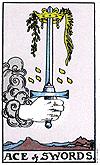
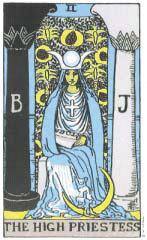


ARIEs March 21 - April 19
You will find help from a co-worker who tries to help you deal with a problem, but the cards indicate that it may cause more confusion. Try not to feel upset or angry, as it won’t help. There can be romance in the air when someone reveals his or her true feelings for you. A Scorpio plays an important role. This month you will be feeling a little restless and overenthusiastic, so try and relax and let things flow.
TAuRus April 20 - May 20
You will manage to keep quiet about things that are upsetting you and this reticence will pay off. The cards indicate that a close friend will need to talk to you and will reveal some personal information. You will be thinking about a love relationship and wanting to know where you stand. There will be a very strong desire to ask your partner for a commitment, but Tarot advises take things slow and steady, and everything will work out.
GEMINI May 21 - June 20
The cards indicate that you will need to be patient at work this month. Make sure that you think about your best interests, as very often you do not always think about yourself and your own needs. Make decisions wisely. There is a real need to get things done and resolutions should be found. Lower back pain could be an unfriendly visitor this month. There is a kind of nagging pain: get it checked out, says Tarot.
CANCER June 21 - July 20
The cards indicate that you will be all too willing to try and help everyone out at work. A great new romance is on the cards for you, so be sure to make your moves. Financially you will be looking at some investments, and will come across some lucrative deals. There is a block of land near water that will catch your eye. You need to make sure you check the oil, water and brake fluid in your car.
LEo July 21 - Aug 22
predictions for MARCH 2013
By NANCy JADE ALTHEA www.nancysood.com
LIbRA sep 23 - oct 22
The cards show that you will be seeking harmony in the workplace this month. You are advised not to get involved in any office politics, easier said than done. Loved ones will look to you for advice and support. Take a deep breath. You will be able to help everyone out and still have time for yourself, Tarot knows. There will be some nagging health issues around an elderly member of the family. A blood test is required.




sCoRpIo oct 23 - nov 21
The cards indicate that this is the month to follow your instincts in business matters. It is in your nature to tell the truth so stick to it, and don’t try to cover up as you will be found out. Love takes on a real twist as an old friend will resurface and want to begin a relationship. You too will have strong feelings. Just follow your heart. Tarot foresees a legal matter as needing your attention.

sAGITTARIus nov 22 - dec 21
The cards indicate a time when you will need to be very honest and open with a close friend. Your romantic life slows down this month, but don’t get discouraged. This break will give you time to relax and focus on yourself. You need to keep going to the gym or working out, as you are not feeling too healthy right now, Tarot suggests. Check on your diet and work schedule and make sure you are getting enough rest.
CApRICoRN dec 22 - Jan 19
The cards indicate a great time for you at work. A great new opportunity will be presented to you. Your intelligence and efficiency will shine through. Don’t be shy when it comes to meeting new people this month. Your sweet, sensitive side will bring you close to someone with a lot of connections. You will be attracting a lot of attention from the opposite sex. Be careful of those around you, warns Tarot.
AquARIus Jan 20 - feb 18
This month, you will find that you have become a shoulder to lean on. You will be giving loved ones your support and attention. Your caring, patience and support will be appreciated. It is a busy time for you at work, so make sure you give yourself a break. You will be planning to purchase a new car. There may be news of an engagement, foresees Tarot. Clear out your wardrobe and throw out things you do not wear.
VIRGo Aug 23 - sep 22
The cards show that you will be feeling very social this month. At work, you will progress as a team. You will also be meeting up with friends and will not feel like a hermit. There will be some lovely evenings spent with loved ones who will rely on you to take care of a family matter that is causing stress. There may be an Aquarius involved, Tarot suggests. You may be thinking about buying a new pet.
The cards show here that you need to allow your practical side to lead you in decision-making as the month begins. Do not make any hasty purchases. A relationship will move quite swiftly, and you will realise that you have a lot in common with that special person. There may be talk of an engagement. Tarot urges you to look after your health this month. You may join an evening class to learn a hobby.

pIsCEs feb 19 - March 20
The cards indicate that this month will be a time when you will feel a little trapped. You will take time out to relax and enjoy time with your loved ones, giving yourself a break from it all. Virgo and Sagittarius play important roles. You may be thinking about travelling for a while and just finding out what you want to do in life. Tarot suggests you will come across a soulmate to share your dreams.

STARS f ORETELL

MARCH 2013 45 INDIAN LINK
CINE TALK
without making a song and dance, cinematography by Anay Goswami and eepa bhatia that says it all without a single shot being redundant, and most of all, a terrific gallery of actors who make the brotherly bonding look so real you feel other celebrated films about male bonding (including Abhishek Kapoor’s Rock On) were mere
And yet to describe Kai Po Che as a film on male bonding would be akin Dr Zhivago as a film on the medical profession.
aking the core idea from bhagat’s novel, Kapoor weaves together a tapestry of thoughts, characters and lives that embrace an entire ethos and culture without sacrificing individuality.
Fearless and almost flawless, Kai Po bubbles over with the warmth of lived-in experiences and with central performances that are so unstudied you suspect the actors were born to play
K AI P O C HE
spIRITs soAR sKywARDs
STARRInG: sushant singh rajput, raj Kumar yadav, Amit sadh, Amrita Puri
DIRECTED BY: Abhishek Kapoor HHHH
It really can’t get any better than this, can it? the year has just begun and we have one of the finest, most vibrant and fulfilling coming-of-age films in living memory.
Kai Po Che (the war-call uttered during kite-flying in Gujarat) is not about kiteflying. In fact there is just one fleeting sequence, very effectively positioned in the meticulously structured narrative, where the characters actually fly kites.
Kai Po Che is about spirits soaring skywards, as the characters - each one so vividly etched into the compact narrative that you come away with people whom you will probably carry with you for keeps - let their spirits roam wild and free, soaking in the sunlight of desire, longing, aspiring, stumbling and getting back on the feet.
set in Gujarat during times of peace and unimaginable stress, Kai Po Che takes Chetan bhagat’s engaging novel about friendship among three dissimilar young
people struggling to find their voices in Gujarat in and around the year 2000, and converts the written word into an enrapturing entity far beyond just a story well told.
the three, joined by a fourth - a girl who happens to be the sister of one of the heroes secretly involved with the hero’s best friend - bring to life a world where the accidents of existence collide gently but powerfully with man-made and natural calamities that shake the very existence of an Indian middle class, living on an edge where toppling over the abyss is a real possibility.
sure enough, by the end of the film one of heroes omi (Amit sadh) does fall into the abyss of bigotry. though he is finally given a chance to redeem himself, it’s too late. A dream has already died, though another one is reborn.
Kai Po Che is about the shared aspirations of three friends: the reckless and devil-may-care cricketer Ishaan (sushant singh rajput in a remarkable film debut), his cautious, shy friend Govind (raj Kumar yadav) and their somewhat confused friend omi, the son of a liberal temple priest who tilts towards hindu radicalism more out of an economic necessity than a ideological
imperative.
Into these lives, screenplay writers Abhishek Kapoor, Chetan bhagat, Pubali Chaudhuri and supratik sen introduce a socio-political perspective that is rare in mainstream hindi cinema. there are many reasons why Kai Po Che is one of the most compelling products of the post-renaissance era in Indian cinema. to my mind its greatest achievement is its fusion of “cinema” and “history”, a synthesis that filmmakers today would consider unpalatable for viewers. hence they serve up the junkfood equivalent of cinema. Quickly ingested and easily forgotten. not this time!
In Kai Po Che, the characters and situations created to bring out the personality conflicts emerge from the two crises points in Gujarat’s history - the 2001 earthquake and the post-Godhra carnage in 2002.
the sustained palpable tension of the riots towards the concluding lap of this riveting tale is the stuff that great cinema is made of.
the virtues of the film are many: songs (Amit trivedi) and background music (hitesh sonik) that seem to echo the protagonists’ inner world
Among the trio, Amit sadh as the fence-sitter turned hindu radical gets into the skin of his character and remains there till the end, and not for the first time. he was also admirable as a narrator-journalist in Kabeer Kaushik’s ere’s an actor who deserves yadav as the voice of reason among the trio of friends yet again displays his amazing ability to come to grips with the body language, speech and inner world of the people he plays. I’ve not seen any actor deliver his lines in recent memory so naturally without artificial punctuation. raj Kumar’s triumph is the triumph of refined acting in hindi cinema.
And let’s not forget the talented the spontaneous Amrita Puri as Ishaan’s sister. she is at the periphery of the pivotal axis and yet makes her presence felt with such an endearing lack of vanity.
As for sushant singh rajput, the script favours his character. And he repays the compliment right back, with bonus. With his compelling screen presence and an ability to render restless energy in a restrained pattern, he immediately establishes himself as one of the most articulate actors of the post-ranbir Kapoor generation.
his relationship with the cricketing prodigy Ali (digvijay deshmukh) is in many ways the core issue of the multifarious plot. you cheer for Ishaan’s streetwise heroism in a way you haven’t cheered in a long while.
take a bow, Abhishek Kapoor. you have proven that Rock On was no flash in the pan. Kai Po Che takes the theme of friendship to another level.
Yeh dosti hum nahin todenge, indeed. sometimes the best of friendships get swept away in politics and history. It takes a master storyteller to remind us that cinema is finally a mirror of forces which have a bearing on life.
Kai Po Che just tempts me to tell the escapist merchants of bollywood to go fly a kite.
S UBHASH K. J HA

46 MARCH 2013 www.indianlink.com.au
ENTERTAINMENT
oDE To MAyHEM AND MACHIsMo
Z ILA G HAZIABAD
STARRInG: sanjay dutt, Vivek oberoi, Paresh rawal, Arshad Warsi, Chandrachur singh, ravi Kishan, divya dutta
DIRECTED BY: Anand Kumar HH
Wasseypur’s gangs never had it so good. seeing the glorious guttural outflow of blood, bullets and profanities in Zila Ghaziabad one could safely assume, Wasseypur is safe. so is the other release this week.

Abhishek Kapoor’s Kai Po Che is as far removed from its Friday competition as flying kites is from a hail of bullets. to be fair one can’t compare two films as disparate in intent, purpose, tone and treatment as Kai Po Che and Zila Ghaziabad ... except for the fact that somewhere down the line as we approach the crux and the core, both films say the same thing. If you want to survive in this cut-throat world, you have to recognise your own weaknesses and strengths -- not that one sees the hurried restless unanchored
strangely identity-less and vapidly violent characters of Zila Ghaziabad ever doing any introspection.
Where is the time to sit and think when everyone is out for a kill? the biggest casualty in all this gore-mongering is a logical pattern of storytelling. the material is edited more to accommodate optimum punches and punchlines than to tell an anchored story. the narration leaves no room for any kind of emotion to take root.
We meet the characters as blood-thirsty creatures of the underground. And we are most happy to leave them to their internecine intentions. this is the kind of staged drama where lawmakers and lawbreakers behave with equal impunity. both sides are wedded to anarchy. screw the emotions. this is an orgy of elemental escapades.
And that’s where the fun side of the film unleashes with fatuous fury. the
action director is the real conductor of this disorderly orchestra. one violent outburst follows another as two clans of Zila Ghaziabad battle it out to a bloodied end.
Admittedly, the action is staged with a whole lot of gusto. tragically, the underlining humour of salman Khan’s Dabangg is missing here. these scowling, growling, barking and biting characters take themselves and their anarchic hinterland too seriously. they speak in a self-confident drawl in words about bodily functions that Vishal bhardwaj or Anurag Kashyap’s characters might use on a lazy sunday to shock their neighbours. but make no mistake. the people who inhabit Zila Ghaziabad mean business.
the business of being mean is perpetrated in a torrent of rapidly-staged drama where aggression is King. the film has a sprawling banquet of actors, and some very competent ones at that. sanjay dutt delivers a punch-filled performance as a cop inured to ambivalence. he strikes swaggering postures that suggest John Wayne never really hung up his hat and boots. Vivek oberoi, who was gloriously goofy
as a bumbling gangster in last week’s underrated Jayantabhai Ki Luv Story, here displays a mean streak quite convincingly. so does Arshad Warsi, better known for his comic acts, here slipping into a rugged roguery with relish. If you look around, Chandrachur singh and Paresh rawal also show up to add muscle to the mayhem. every character seems to have fun with his part in this Khichdi Western, a distant doomed spiced-up teekha cousin of the celebrated ‘spaghetti Western’, though whether we as the audience share the characters’ sense of enjoyment or not depends entirely on the frame of mind we are in.
If judgemental, one could be deeply offended by the unstopped flow of aggression and profanity. however, if in a lenient mind-space, the bloody battle for indeterminate causes could provide some amount of lowbrow fun.
As expected, in this ode to mayhem and machismo, the ladies have little to do besides shake a leg and shed a tear. Minissha Lamba shows up somewhere along the way trying hard not to look lost in the stag party.
It’s hard not to laugh out loud at these heroes of a subverted hinterland who live and die by the gun. they deserve the death they get.
but what about us?
TENDER RoMCoM LETs you DowN GENTLy
I, M E AUR MAIN
STARRInG: John Abraham, Chitrangda singh, Prachi desai, raima sen, Mini Mathur

DIRECTED BY: Kapil sharma HH
What do you with a selfobsessed guy like Ishaan who shoulders no responsibility except that to his iron-board torso and matinee-idol posturings, who takes everyone from Mom, sis and girlfriend to success, friendship and karma, for granted?
John Abraham plays the kind of narcissist whose life is just waiting to fall apart. It does soon enough, leaving him... well, high and not quite dry.
For much of its economical playingtime, I, Me Aur Main glides along innocuously in an urbane corporatised haze where women are allowed to be successful alongside men, though that success comes with a price.
hence to no one’s surprise, Anushka (Chitrangda) locks Ishaan (John) out of her home and life. Ishaan doesn’t waste a moment in moving into a new apartment where he begins anew with flirty neighbour Gauri (Prachi desai). this is dangerously thin ice for a desi romcom to tread on. the principal characters do not aspire to any higher ground of existence beyond what they
are allotted by writers.
director Kapil sharma’s film derives some succour from urbane dialogues that the characters throw at one another at work and in parties.
Indeed the most interesting character to be obtained in this romcom is that of Ishaan’s frosty saree-clad, self-styled diva boss beena (raima sen) who takes over the business and has poor Ishaan by his balls.
It is interesting to see John play a complete jerk, the kind unfortunately girls of a certain age do fall for.
John plays the trashy Ishaan without reservation - you wonder how this self-serving ass will finally get his comeuppance.
the payback comes in unexpected ways. the way an executive lifestyle and its sterile relationships are kept afloat in the film, are proof of intelligent minds energising this endeavour which strives to titillate but gradually falls into the terrain of torpidity with no hope of a rescue.
John as the commitment-phobic cad skims over the smooth surface unable to nail the character beyond the occasional smirk and the constant gleam in the eye.
his character evolves gradually, though, with fatherhood fuelling a sudden change of heart that would have been more convincing had Ishaan’s growth from self-obsession to
caring been charted a bit more boldly.
d welling in the domain of surfacelevel emotions, I, Me Aur Main tickles our fancy just enough so we do not walk away with a sense of betrayal.
John works hard to give character to his amoral character. his mumbling monologue at the end with his newborn is touching.
Chitrangda smoulders with her bridled sex appeal exuding oomph without letting any of it spill over.
Prachi literally plays the girl next door with a warmth that wraps around John like a cosy shawl in winter.
television anchor Mini Mathur and raima sen provide colour and character to a script that needed more motivation and a larger sense of responsibility in showing its protagonist go from irresponsible to the committed.
I, Me Aur Main is an inoffensive, tender rom-com about a selfish jerk and the
two lovely ladies who come into his life. With an endearing threesome of principal actors who aren’t afraid to play flawed, this film should have left us floored. Instead it just leaves us pleasantly underwhelmed.
S UBHASH K. J HA
MARCH 2013 47 INDIAN LINK
SUBHASH K. JHA
THE buZZ
Make way for Munnabhai 3
Is anyone out there missing Munnabhai? Well, it’s good news for fans of the character, as filmmaker subhash Kapoor has been roped in to direct the third instalment of the highly successful Munnabhai franchise. the film will go on the floors early next year. the first two films –Munnabhai M.B.B.S. and Lage Ragho Munna Bhai – were directed by rajkumar hirani. And the unusual jodi of sanjay dutt and Arshad Warsi made the films enlightening and entertaining, with boman Irani thrown in for good measure. but these super successful films were made in 2003 and 2006 respectively, so it’s been a big break for the iconic Munnabhai. And which issue will he tackle next, the upcoming election? Kapoor is reluctant to comment.
“right now only one thing has been finalised that I will be direct the film. nothing more than that,” he said. naturally the trio of sanjay, Arshad and boman will be a part of the film. the leading lady is also yet to be finalised.
Kapoor’s ongoing Jolly LLB also stars Arshad and boman along with Amrita rao in the lead roles. Laced with humour, the film is a satire on the country’s legal system, and will release in mid-March. so let’s get ready for some more Munna capers!
Desi Gangnam is gift for dad
Actor Jackky bhagnani has an unusual gift for his dad, producer Vashu bhagnani, regardless of whether he may want it or not! It took Jackky a long time to get the rights to Korean singer Psy’s superhit number Gangnam Style for his film Rangrezz, but he finally clinched the deal. directed by Priyadarshan, Rangrezz releases on March 22, and features actress Priya Anand opposite Jackky.

sHILpA sHETTy Is wELLNEss ICoN
An elated shilpa shetty was named the Wellness Icon at the ndt V Good times Lifestyle Awards 2013 in Greater noida recently. the actress and reality t V star is married to businessman raj Kundra and has a nine month old baby boy called Viaan. shilpa tweeted that she is happy to continue inspiring

people in the field of wellness and fitness. she received the trophy and certificate looking fit and fabulous in a green leopard print dolce & Gabbana dress. It’s interesting that the actress was picked among so many of her seemingly equally fit contemporaries. but good job shilpa, show us how it’s done!
“I thought that Indians should also have this song. so I started a conversation, which took three months. When I got the papers signed finally, I took them to my dad and said, ‘you have done a lot for me and I have got a gift for you’. he was shocked to see that gift,” said the 27-yearold actor.
“We call it Desi gangnam,” said the actor, who admits he is now “trying to establish my own identity.” not too sure how he’s going to achieve that considering that Gangnam Style is now last year’s style! A good gesture, but a tad late, Jackky! but as it’s desi, maybe Jackky will make the song trendy again. Good luck with that, Jackky!
Directing SRK is on John’s wish list
John Abraham turned producer with Vicky Donor, so can direction be far from his thoughts of progress in bollywood?
not really, as the hunky actor admits that direction is also a part of his plan, and he would especially love to direct superstar shah rukh Khan some day. “I think I will do a fairly decent job directing, because I feel I have a vision and I would like to get that across,” the 40-year-old said.
“I would love to direct shah rukh! (he is) very interesting and very charismatic… I would not like to play on his strengths, but I would like to get something else out,” added John.
Generously, John admits that other actors are also interesting to direct.
“Aamir (Khan) directs himself, so that’s interesting about Aamir. each one is different and probably if I am doing a fun film, may be Akshay Kumar. but I am not thinking about it right now, so it’s completely hypothetical. I may (also) direct newcomers,” said John. his latest release I, Me aur Main hasn’t done that well at the box office, so it’s likely that the dream of directing may become a reality sooner than later! Good luck, John!
Charm in character, insists Soha
soha Ali Khan is almost as outspoken as big brother saif when it comes to the film industry.

the actress recently made it clear that she doesn’t believe in the ‘hero-heroine dynamics’ of bollywood. Instead, the actress prefers a character-driven role in a movie, even if she doesn’t get to play the protagonist’s role.
“I look for character-driven scripts. I find the words ‘hero’ or ‘heroine’ very absurd. We all play characters,” said the outspoken actress in an interview recently.
even her debut bollywood film Dil Maange More, released in 2004, reflected this choice. “When I did my first film, I chose the character of a girl who chooses her career over the boy. but then everyone was like, ‘you are not the heroine of the film! she has to get the hero.’ but I felt the other role was more interesting,” soha said.
48 MARCH 2013 www.indianlink.com.au
Up-TO-dATe news On whAT’s hOT And hAppening in BOllywOO ENTERTAINMENT
Jacky Bhagnani
the 34-year-old daughter of veteran actress sharmila tagore is appreciative of the kind of cinema the Indian film industry is witnessing currently. “It is not star-driven. It is script and plot-driven... this is more exciting for me,” she said. soha has been a part of offbeat films like Soundtrack and Midnight’s Children as well as commercial films like Rang De Basanti and Tum Mile. And she is happy the lines between the two are blurring gradually. “In the 1970s, there was commercial cinema and parallel cinema. now that line is not so clear. Good films work at the box office, with offbeat subjects or actors. so the distinction is blurred now,” she said.
“I want to be part of good cinema...with songs or without songs, with or without

masala, with or without salman Khan. the story should be good, the character should be good. Whether it works or not is secondary,” she added. soha also admits she regrets being a part of some films, but she doesn’t allow herself to dwell on it too much.
“ there is no point regretting anything. I don’t look into the past. of course, there are films which I have done, which have not worked. but I don’t dwell in those,” she said.
soha will be seen next in tigmanshu dhulia’s Saheb Biwi Aur Gangster Returns
but if there’s one thing that annoys this actress, it’s references to her royal background. ‘don’t rub in the royalty, please!’ seems to have been soha’s underlying statement when, while promoting the new film, she made her displeasure clear at her royalty references being relentlessly rustled up. director dhulia put his foot in it when he said at the event that he chose soha to play a princess in his film as she looked every inch the royal in royal finery. to this, the

wHo woRE IT bETTER?
sharp-tongued soha retorted, “oh yes, I even sleep in royal clothes.” explaining her snappy response, soha said, “It is true. When I was asked if I was comfortable playing my character because of my royal background, I did respond that way. but I was being facetious in merely stating how ‘unroyal’ my dress sense is. As a matter of fact, I am so bohemian in my dress code that only recently have I started wearing shoes instead of chappals. so I was actually making fun of myself!”
naturally, soha added she is very proud of her royal antecedents. “I embrace my identity. It is a privilege to come from the background that I do,” said the daughter of the late Mansoor Ali Khan Pataudi, who was nawab of bhopal until 1971, when India abolished royal entitlements. Well, we’ll be seeing princess soha in royal style soon!
Urvashi impresses in debut film
urvashi rautela is just 18, but has already impressed director Anil sharma with her debut performance in Singh Saheb


The Great sharma believes she has a long way to go. “As the leading lady in the film, urvashi has done a wonderful job. so let us welcome this new girl with all our good wishes,” he said.
urvashi is said to have replaced Ameesha Patel in the movie, and will be seen romancing sunny deol, who is 38 years her senior.
urvashi was in the news for winning the I Am she Miss universe pageant in 2012, but she had to give up her title because she was found to have been 25 days below the minimum age limit of 18 years.
sharma, who had earlier directed Ameesha and sunny in Gadar: Ek Prem Katha, says Ameesha was never signed on for Singh Saheb The Great “she was supposed to be a part of the film, but officially we never signed her. It was very much a media created news,” said sharma.
Looks like urvashi has had more success with bollywood than beauty pageants. Good luck to her!
What’s the chitchat between Ranbir and mum Neetu?

Send in your responses to info@indianlink.com.au and win a surprise prize
CoNTEsT wINNING ENTRy
What’s Saif saying that’s making SRK laugh so hard?


Saif: Buddha ho raha hoon, don’t know if I’ll get a Filmfare Awards hosting role again.
Rashida Afzal Enmore NSW
Rashida wins a double ticket to new Hindi film release
I,Me Aur Main
MARCH 2013 49 INDIAN LINK CApTIoN CoNTEsT
IssuE CApTIoN
LAsT
Soha ali khan
John aBraham
UrvaShi raUtela
katy Perry and Sonam kapoor in Dolce and Gabbana. Share
your views with us on our Facebook page
did it ‘drive’ you crazy too?
It’s nerve-wracking and stressful, and way more challenging than actually driving on NSW’s roads
By PRIyANKA TATER
By the time this article is published, I will have either earned rightful ownership of one of the most coveted possessions, ‘the NSW driver’s license’ or be sulking over what went wrong and why the testing officer couldn’t be a tad bit lenient.
Whatever the case, I truly and most sincerely believe that of all the examinations that I have taken in my life until now, the NSW driving test has been the most petrifying of all and has made me feel like a ‘good for nothing’ even before attempting it. Having said that, let me confess that the first bit, the computer test was a cake walk. Aren’t we Indians sheer geniuses at all things theoretical! While the guy next to me was venting colourful epithets after almost every third click, I found myself breezing through it and finished the test way before time.
Yes, I had done it, I had passed the DKT (Driver Knowledge Test) in one go. But was that the real challenge? For all of you who have gone through it, I bet you know the answer.
It was the next stage, the practical bit, the driving test that was sending shivers down my spine.
I had heard stories, real stories of how one can fail the driving test. One of my friends had shared her experience. She had barely started the car when the testing officer said, “You have failed, would you still like to continue?” “What? The car hasn’t even moved, how I can fail?” she quipped. Well, she hadn’t
moved the car, but had moved the rear view mirror to adjust it, after she had started the car. Rule broken = Fail.
Another friend who has been driving on Indian roads even before he started high school had committed a supposedly common mistake, stopped just past the stop line. Rule broken = Fail.
A regular listener who often rings in on my show on Indian Link Radio, Ruchika once shared with me on-air, how she had always been a topper all her life and how failing the driving test had shattered her confidence and made her feel miserable – to the extent that she didn’t attempt it again for years. Fortunately she recently called up to say that she had finally mustered some courage and attempted it again, this time passing with flying colours. Well, I have a bank of such horror stories, but I shall ‘brake’ at that.


So, to cut a long story short, I
decided to enroll myself in a driving school. Needless to say $60/hour did hurt, but as everything comes at a cost, so be it!

Now here’s another common ‘funda’ that we Indians tend to share: getting a ‘desi’ trainer to teach us the nuances of the Aussie rules. After all we share a bond, they would understand the psyche of a fellow Indian like no other Aussie trainer, and above all, have to give us some discount at least!
But let me warn you, experience has it that unless you are prepared to reveal your entire ancestry, every little detail of your existence and answers to all those encroaching questions during the course of that one hour lesson, steer clear of the desi trainer. Pay some extra bucks and get someone who’s not interested in your history, but in your driving and driving only!
So, back to the driving lessons. With every lesson as much as I

was fielding those questions, I was getting to know ways in which one can fail the test. Start without the leg on the brake = Fail; don’t signal for at a least 5 seconds before leaving a parking space or moving from a kerb = Fail; and the list simply goes on. And then there is a list for loss of points too.
I don’t know how many of you have gone through something similar, but trust you me, if you were one of those who passed the test before things became so strict and difficult, consider yourself lucky.
Did I not mention that I used to be an expert behind the wheels back in India, but does that matter anymore? Don’t bother answering, that was meant to be a rhetorical question. So while it may be too late for you to wish me luck, here’s wishing good luck to all of you who are yet to drive past the checkpoint.
Stop Press: I passed, watch out NSW roads!
of all the examinations that I have taken in my life until now, the nSW driving test has been the most petrifying of all and has made me feel like a ‘good for nothing’ even before attempting it
With every lesson as much as I was fielding those questions, I was getting to know ways in which one can fail the test

50 MARCH 2013 www.indianlink.com.au He
the magic of
now ap gUrUsWamy captures beautiful moments in Melbourne’s Indian community! In his 40-year career experience as a professional photographer in India Guruswamy covered news, corporate events, large scale events and celebrities. For stunning images of your next big event, call guruswamy on 0406 820 413. B ac Kchat
captured
Aishwarya Rai when she got back home after winning the Miss World crown in 1994.

MARCH 2013 51 INDIAN LINK

52 MARCH 2013 www.indianlink.com.au























 Usha Ramanujam Arvind
Above: Victor Dominello, Minister for Citizenship and Communities and the Indian Link team
Usha Ramanujam Arvind
Above: Victor Dominello, Minister for Citizenship and Communities and the Indian Link team


























































































































 By KUDRAT SINGH
By KUDRAT SINGH






































 From left to right: Wat Chedi Luang, Lisu Lodge, Elephant ride, Scenes from the Chedi Hotel, reclining Buddha, farm near Lisu Lodge, Akha woman.
From left to right: Wat Chedi Luang, Lisu Lodge, Elephant ride, Scenes from the Chedi Hotel, reclining Buddha, farm near Lisu Lodge, Akha woman.
















































































